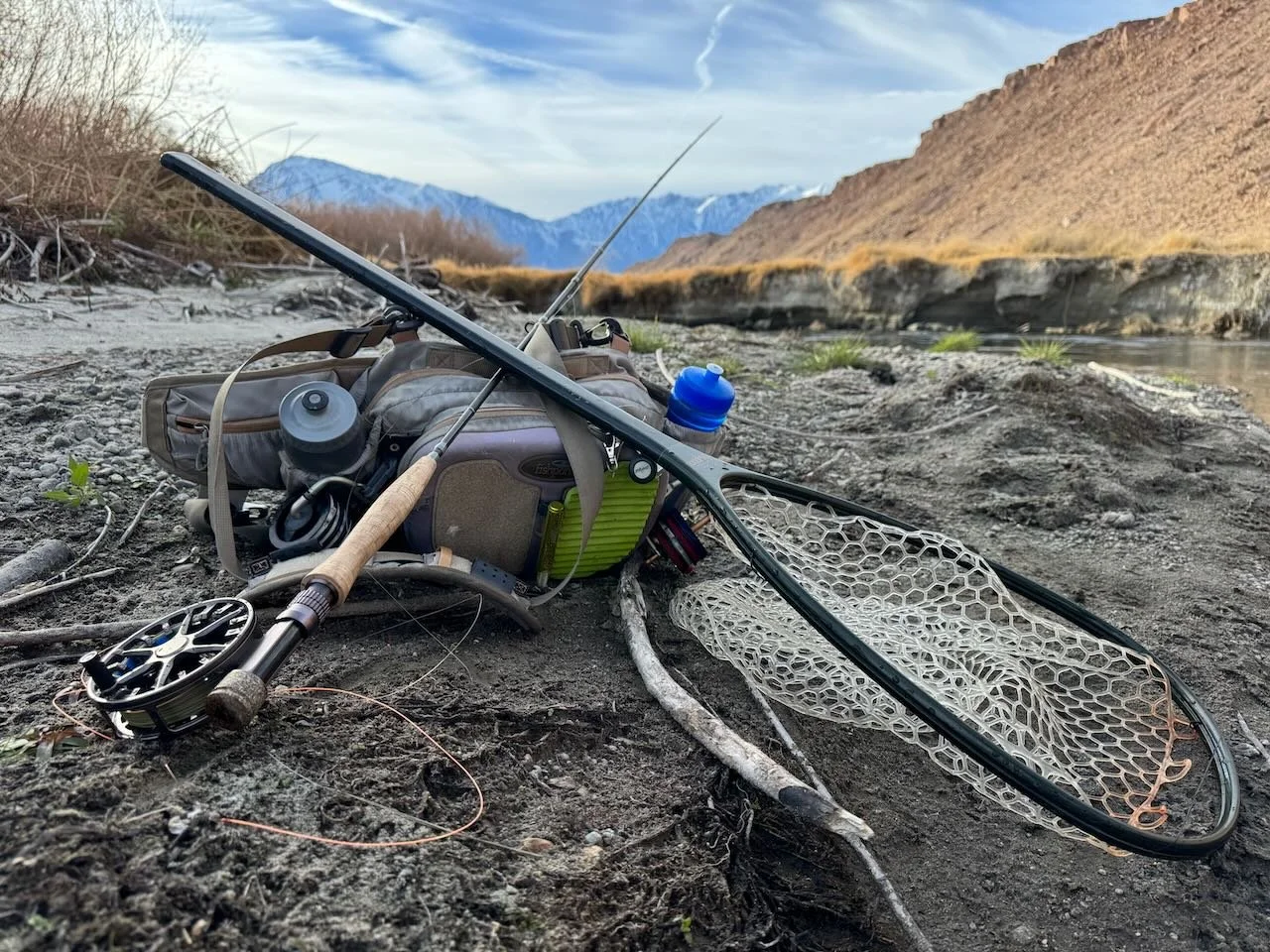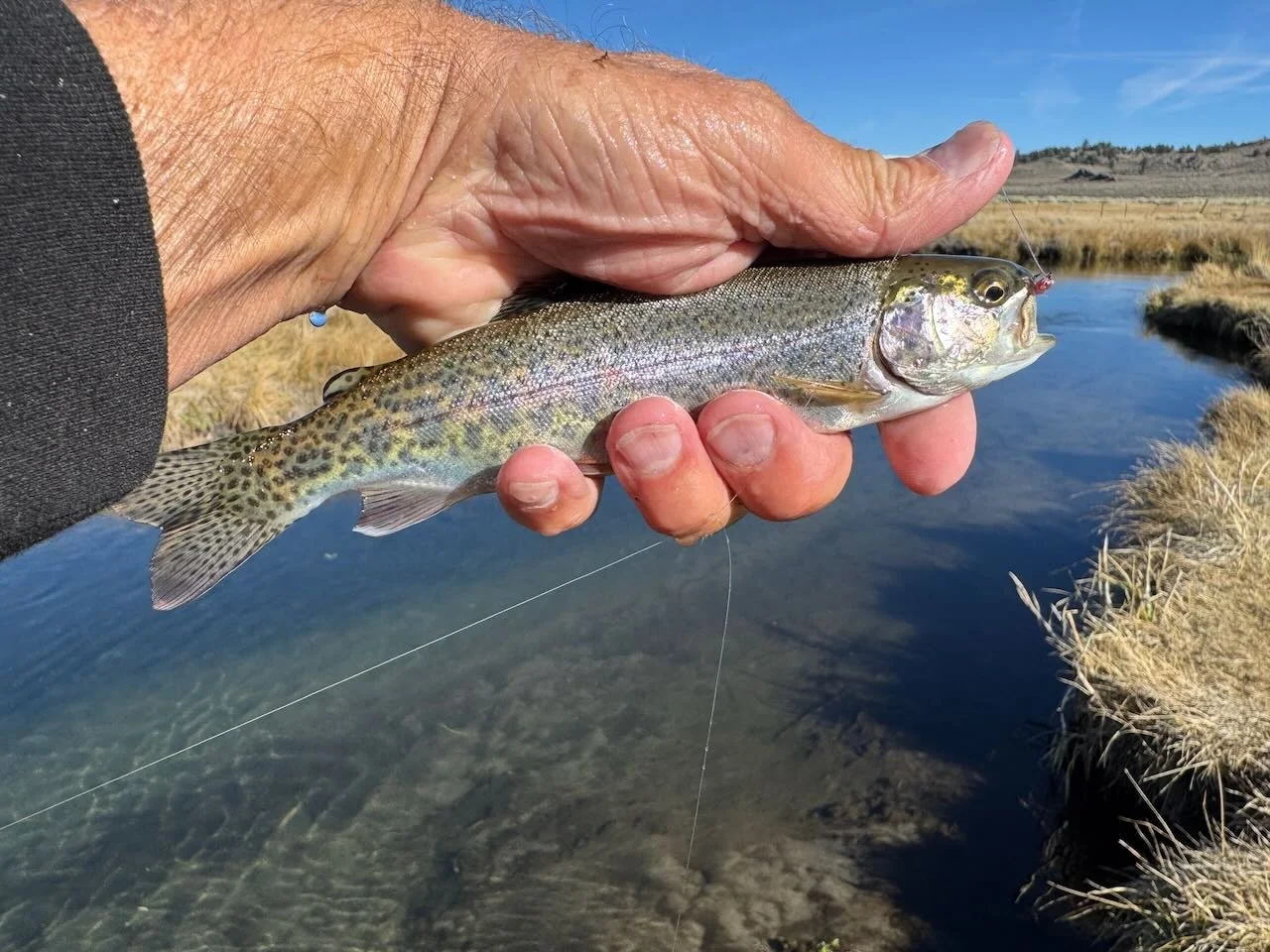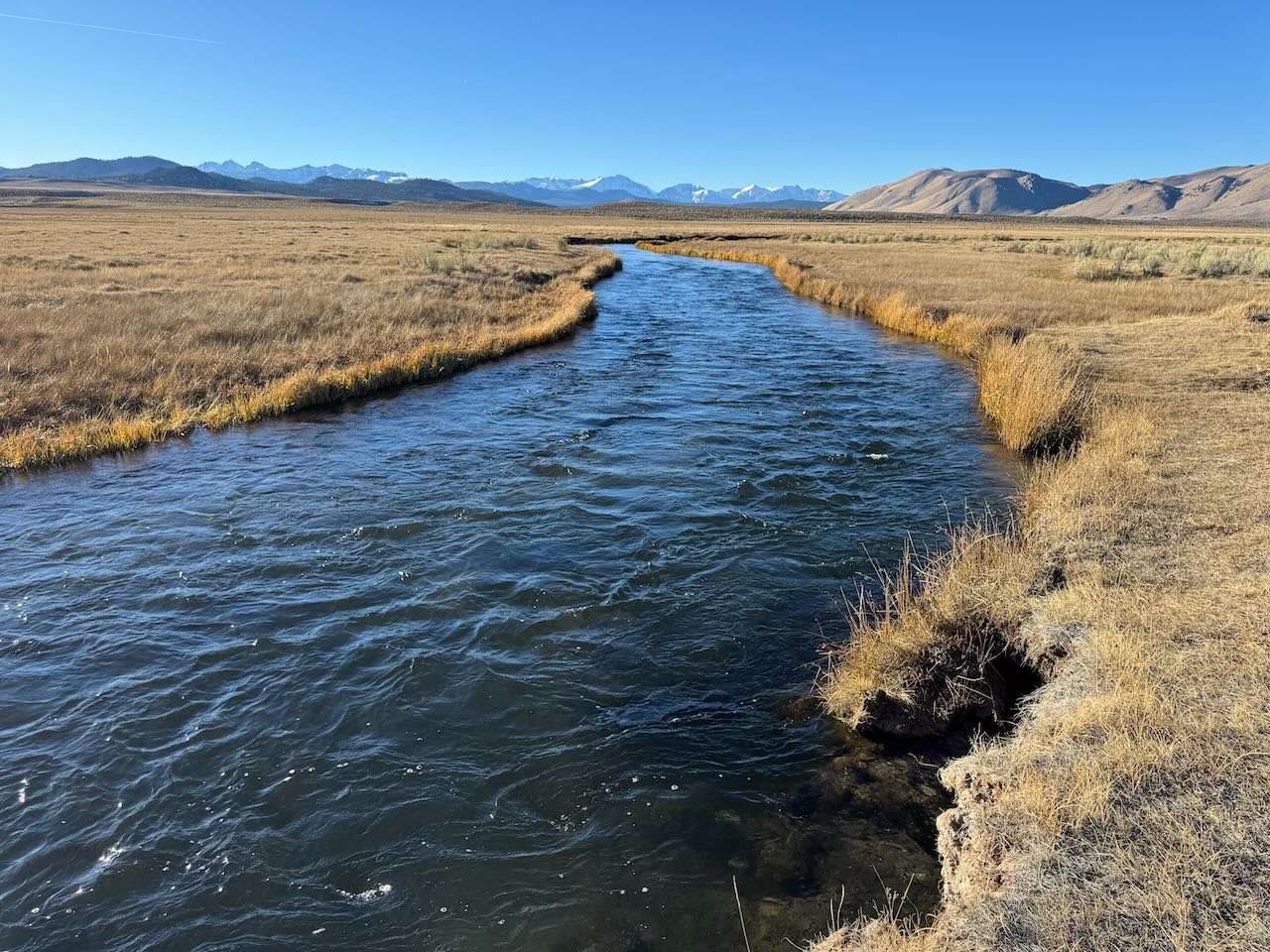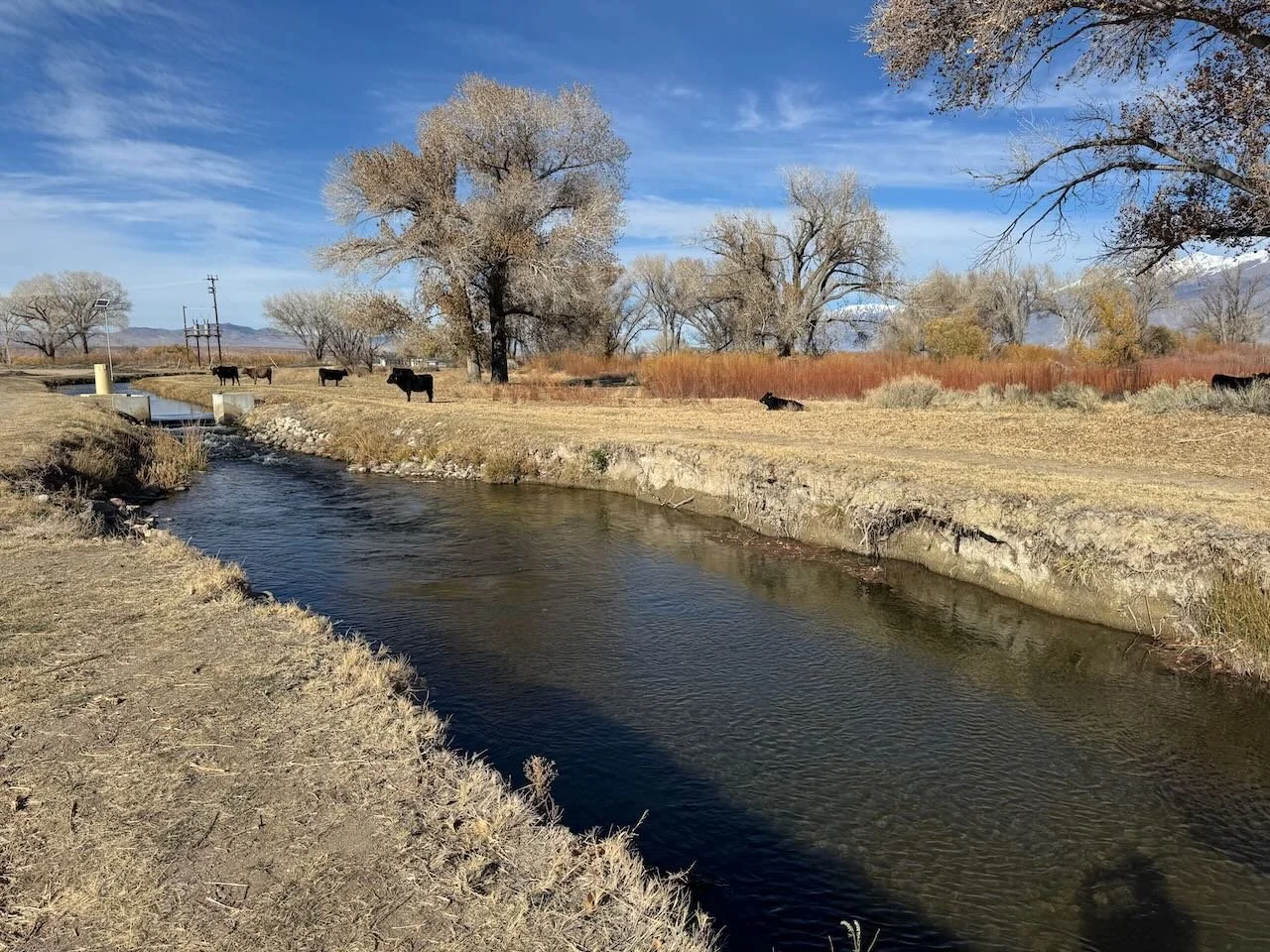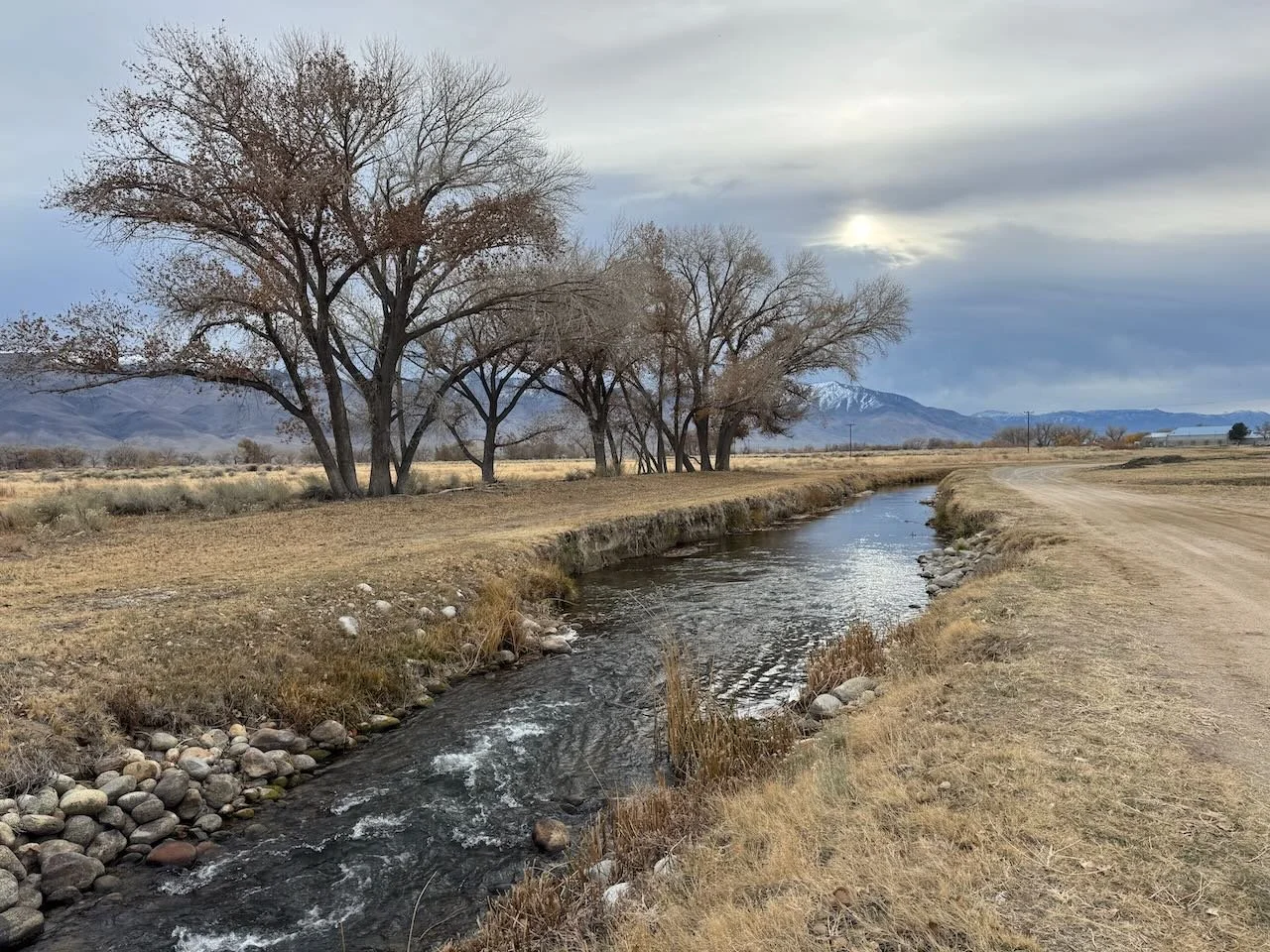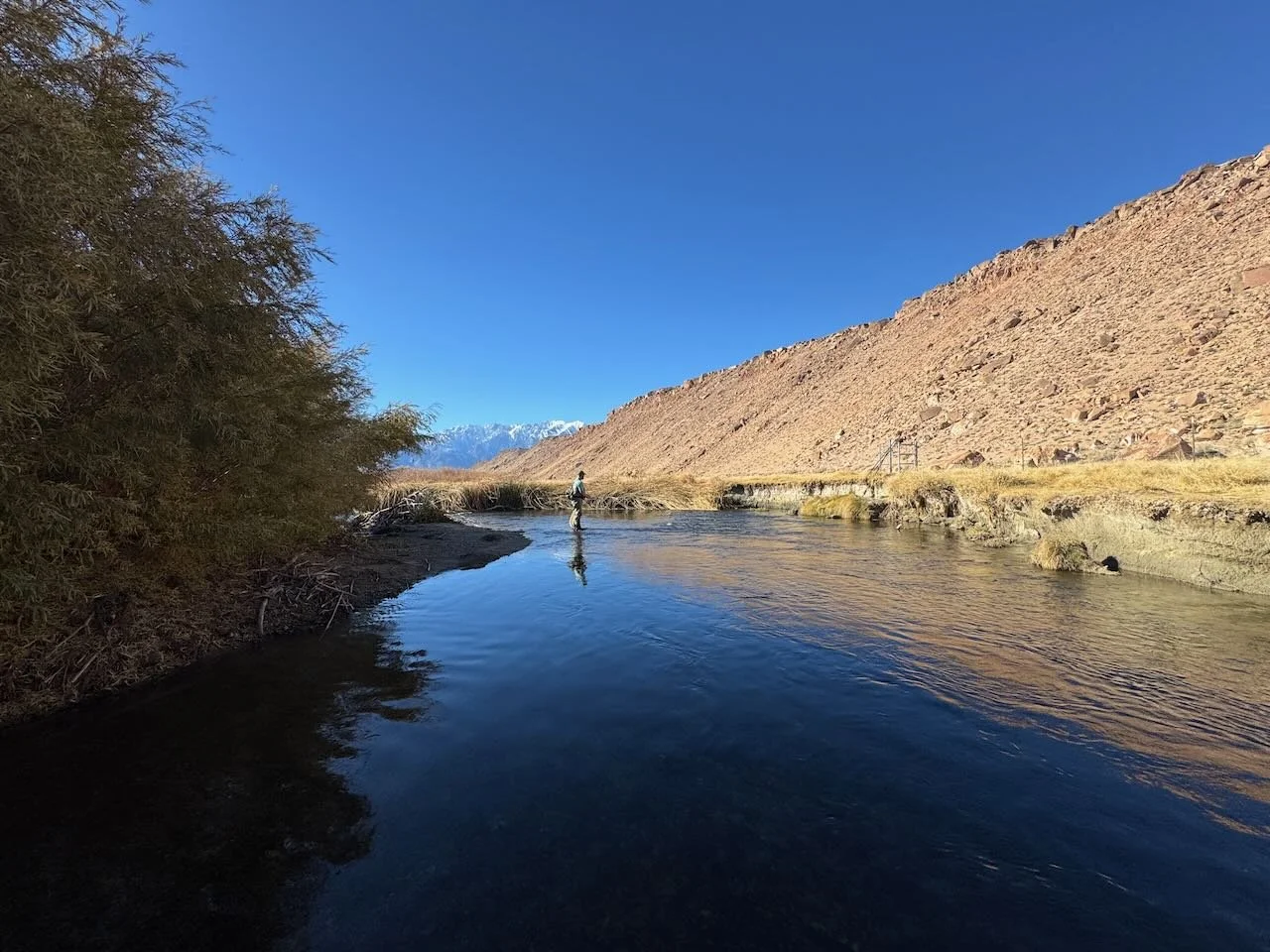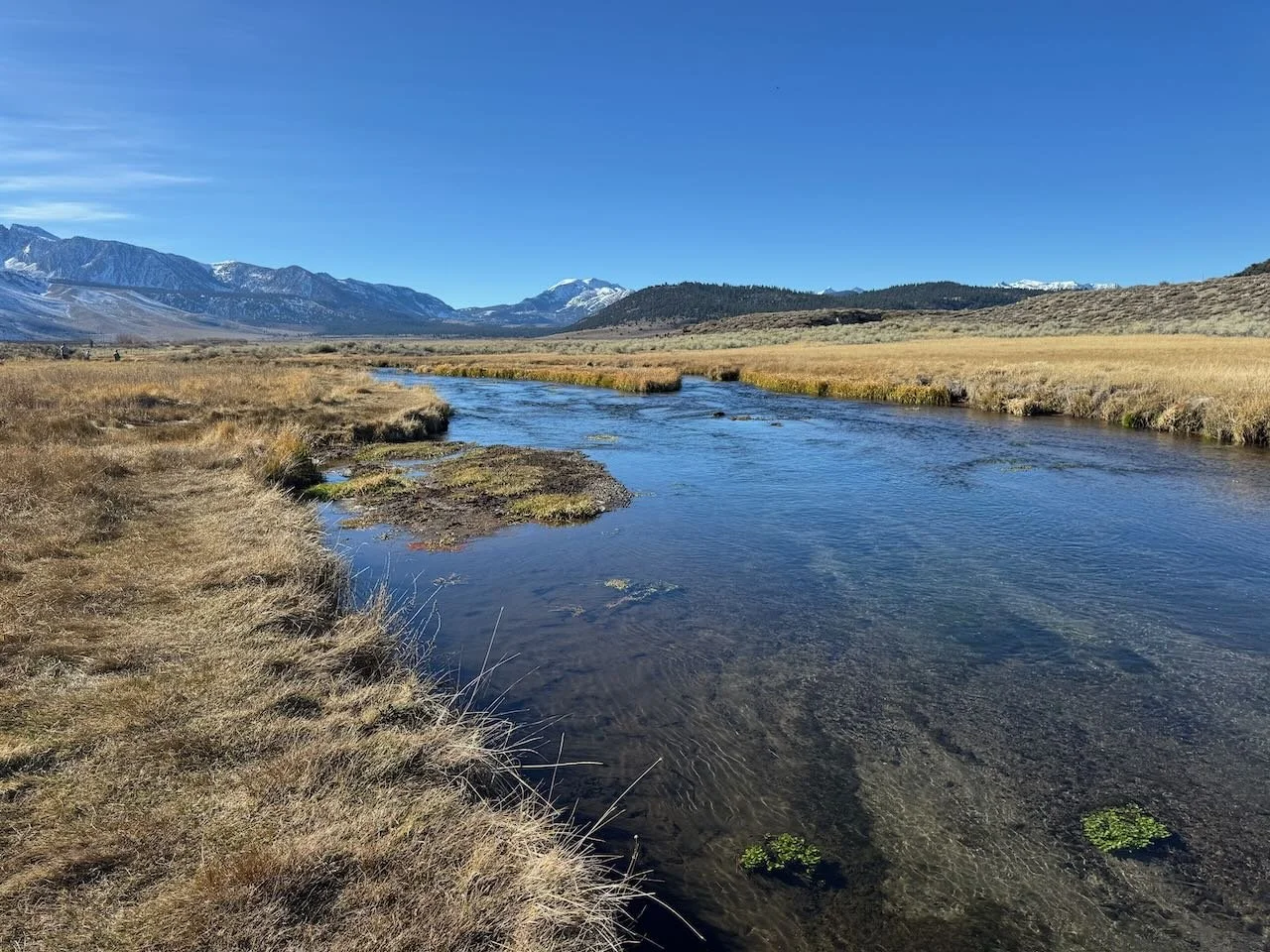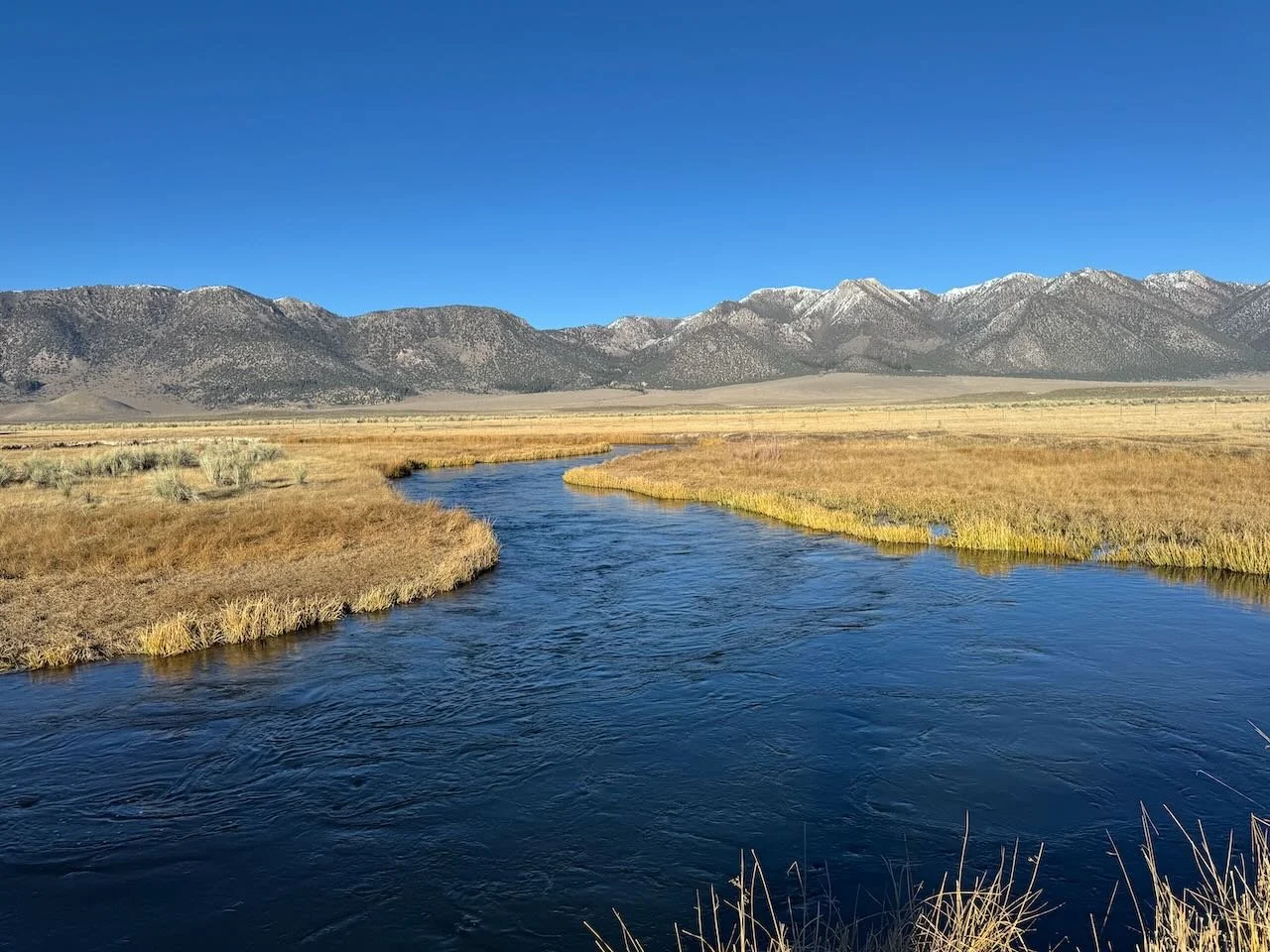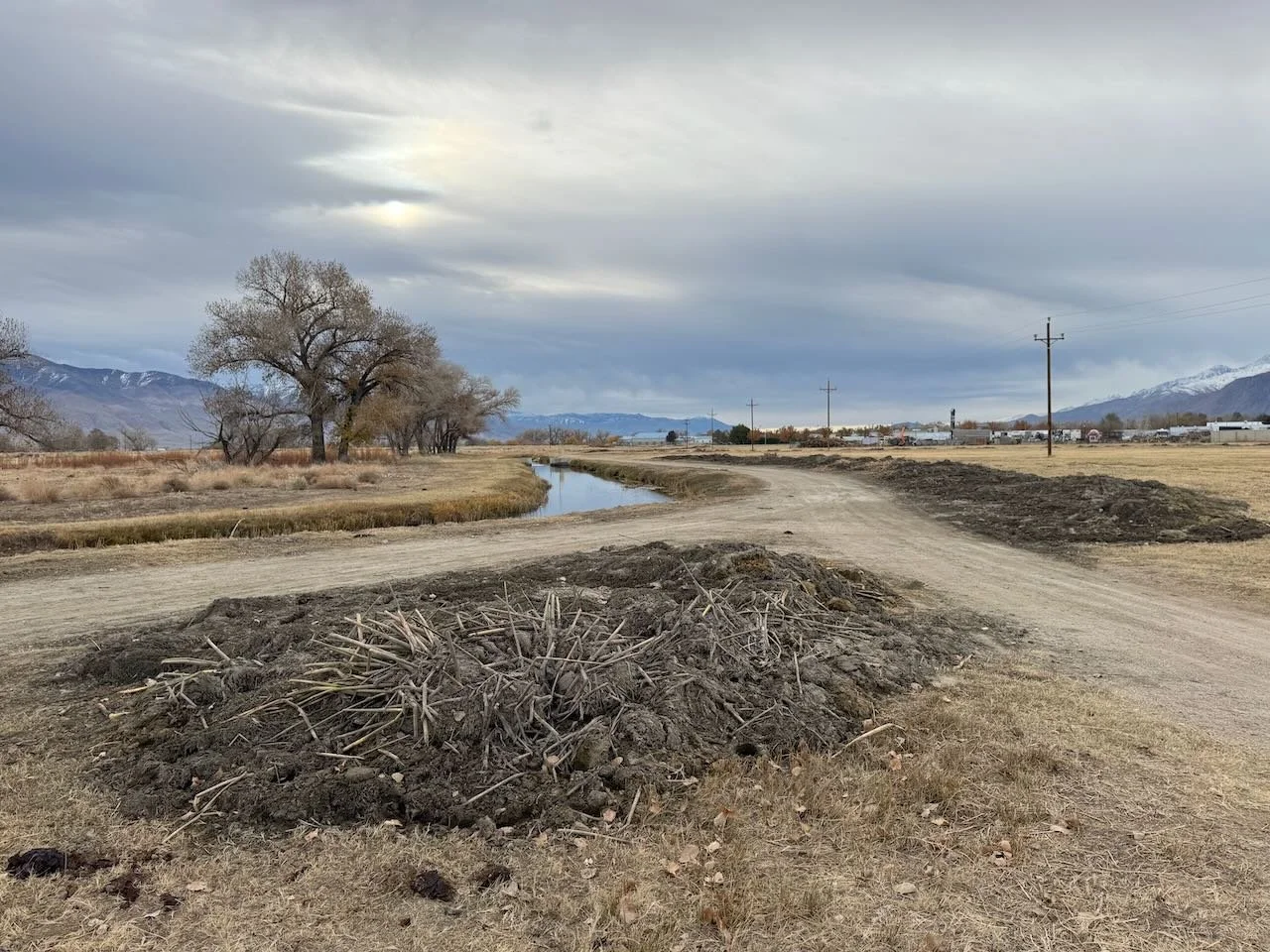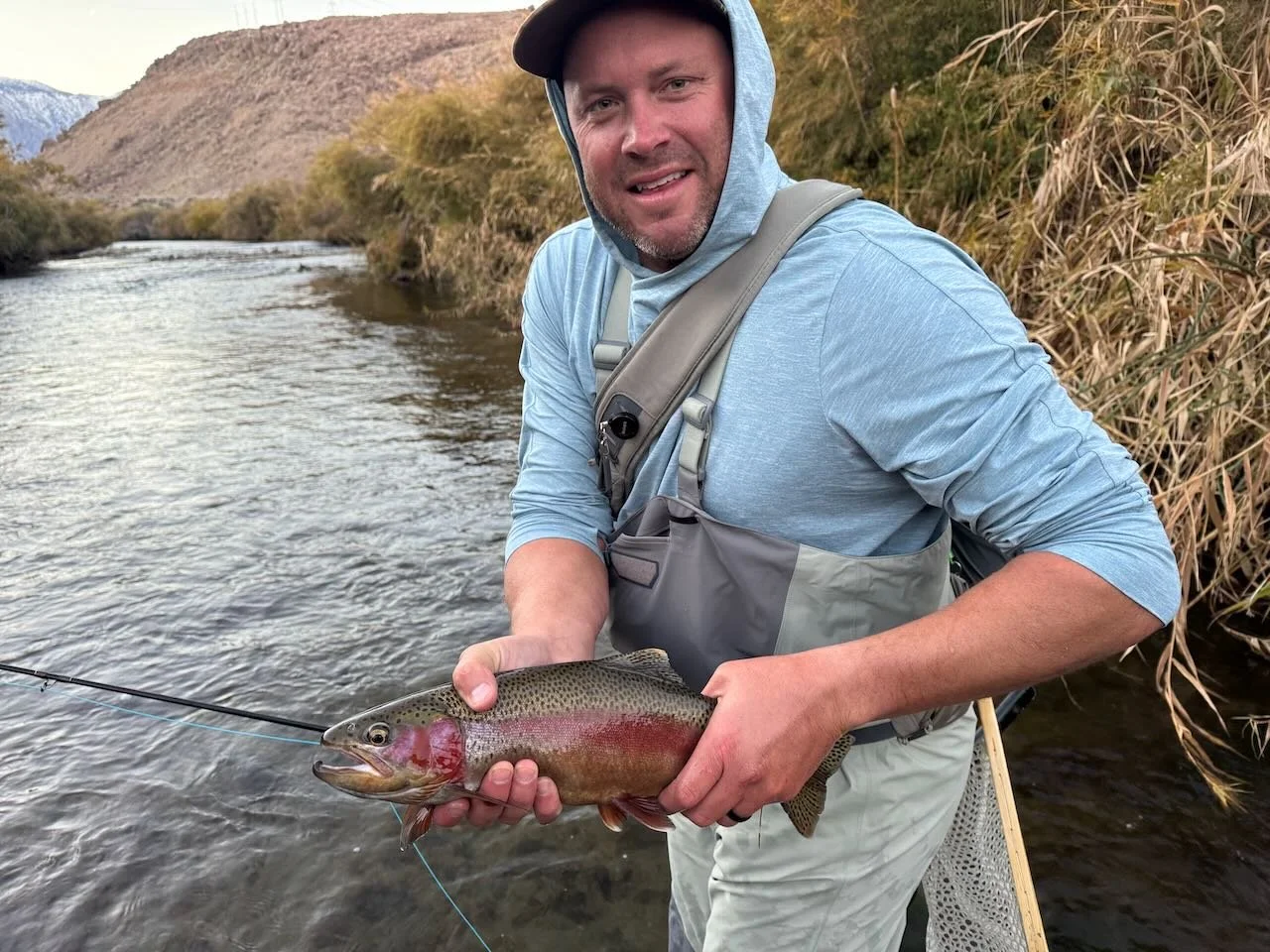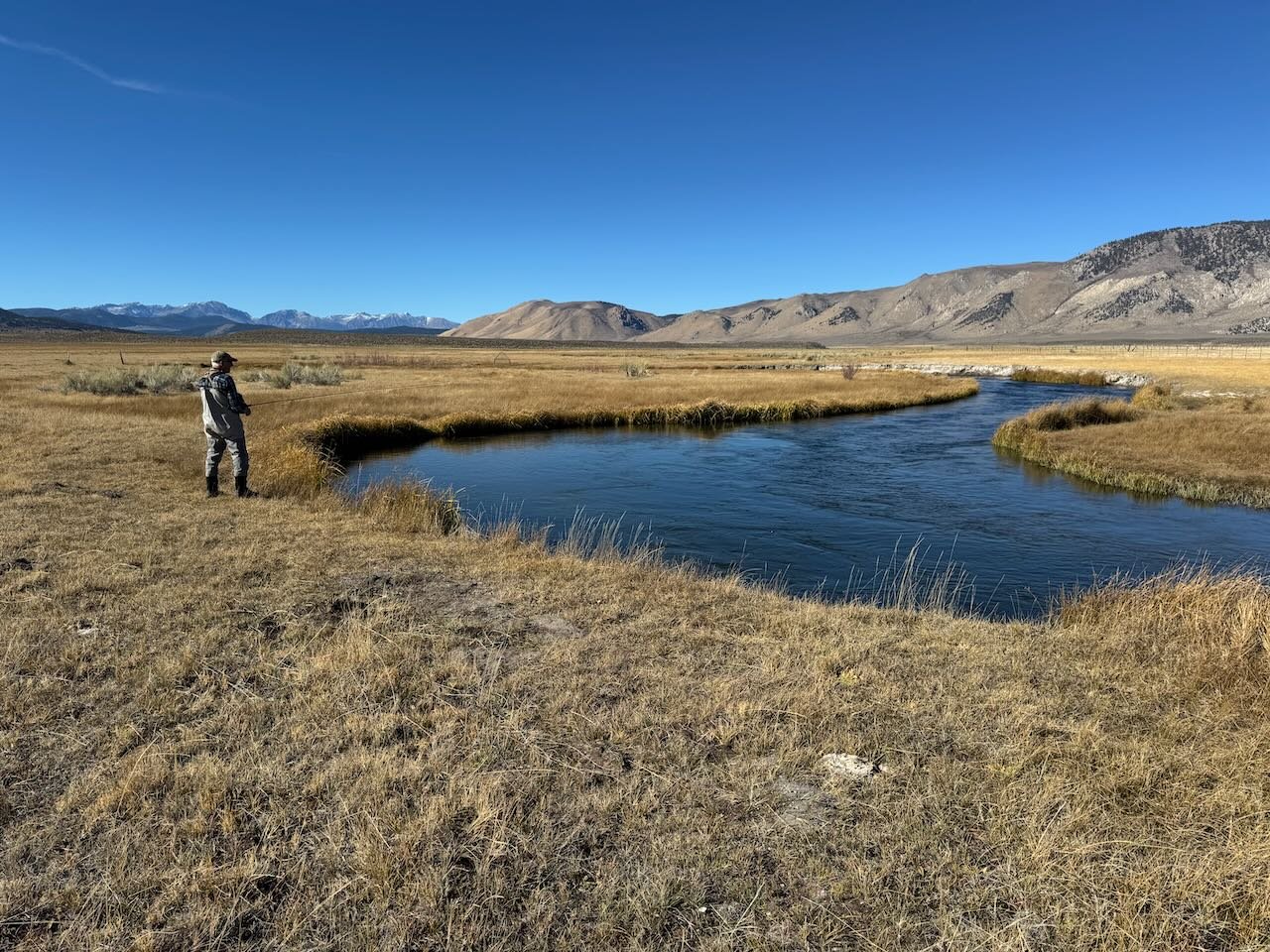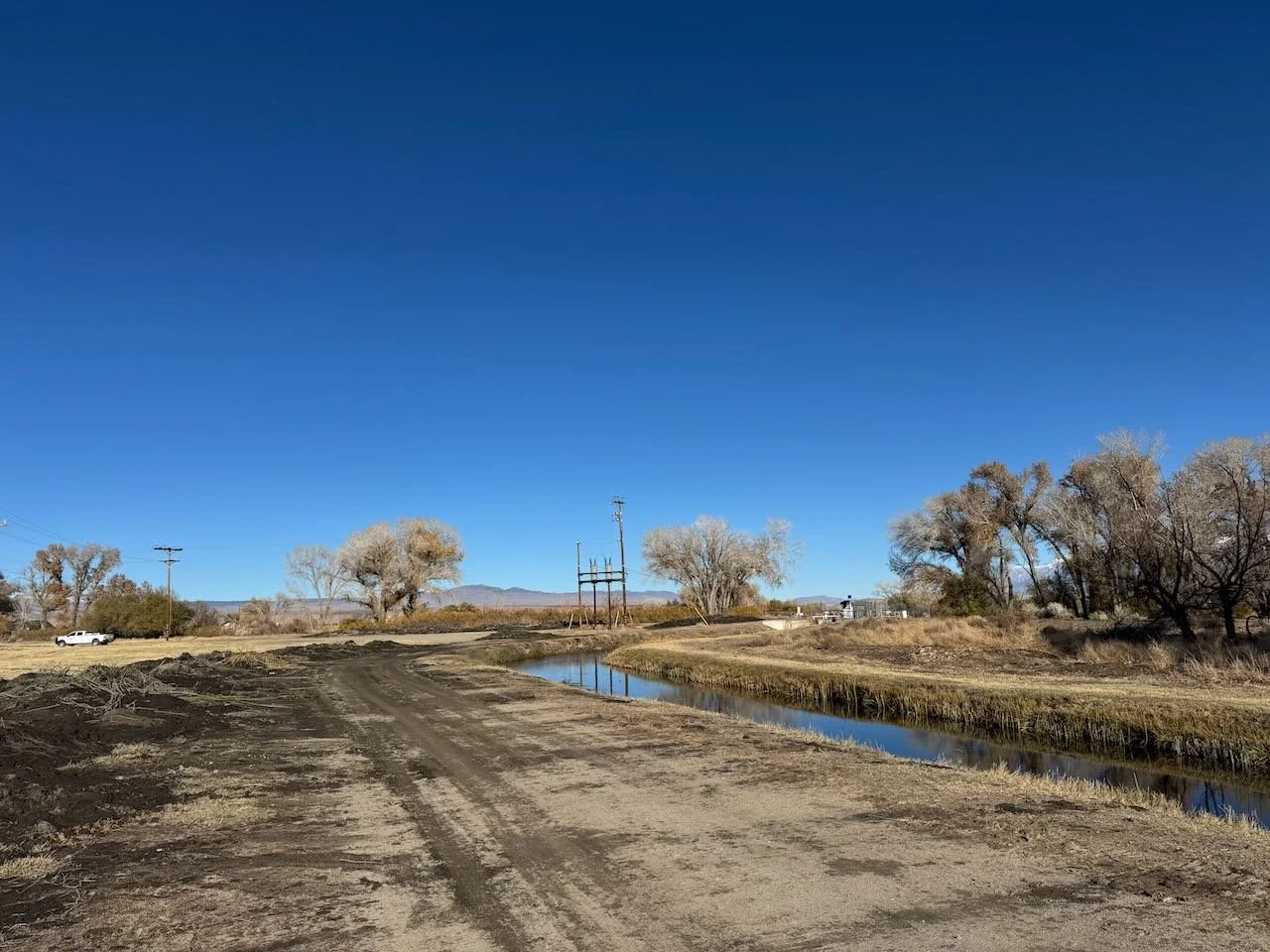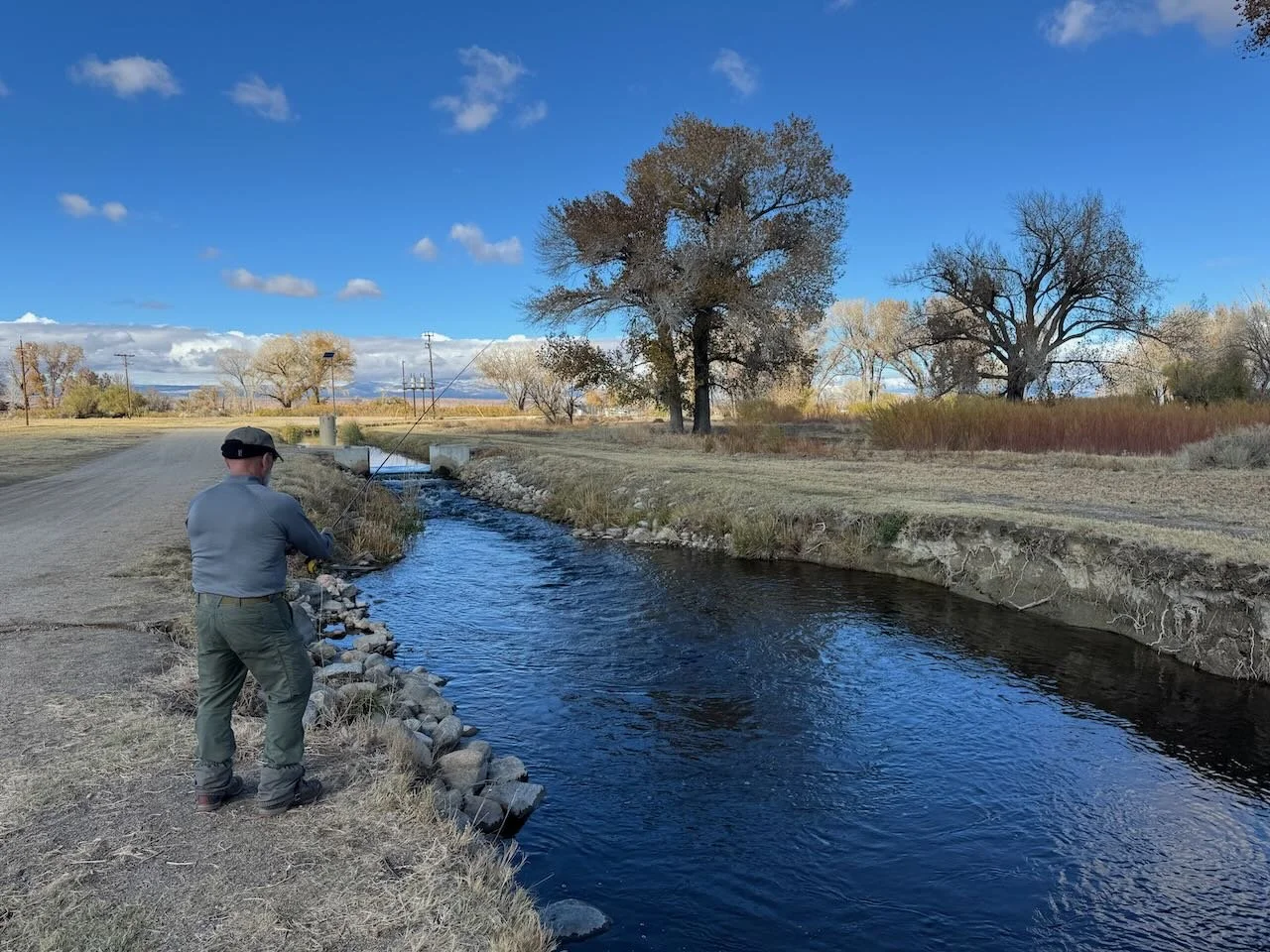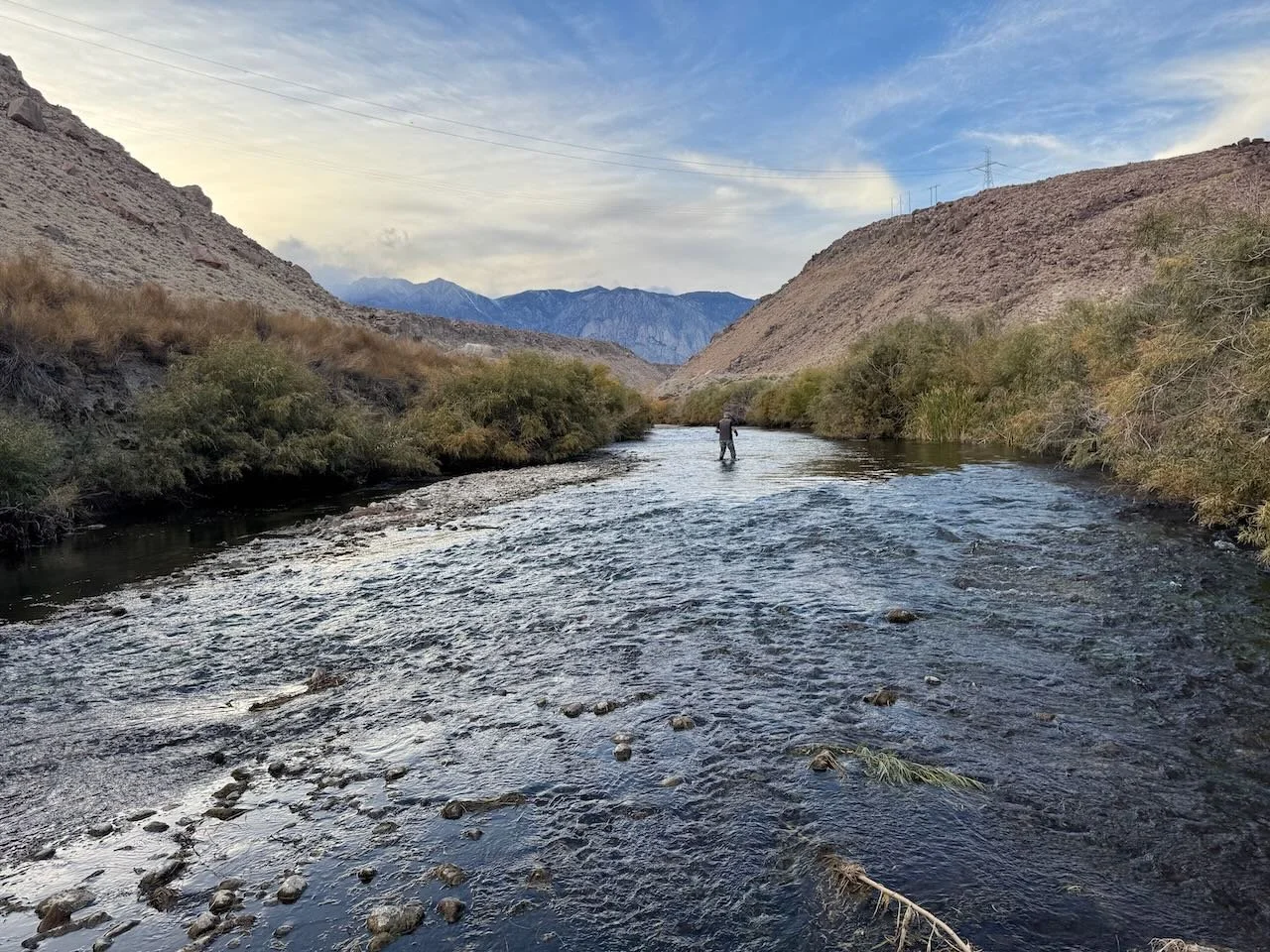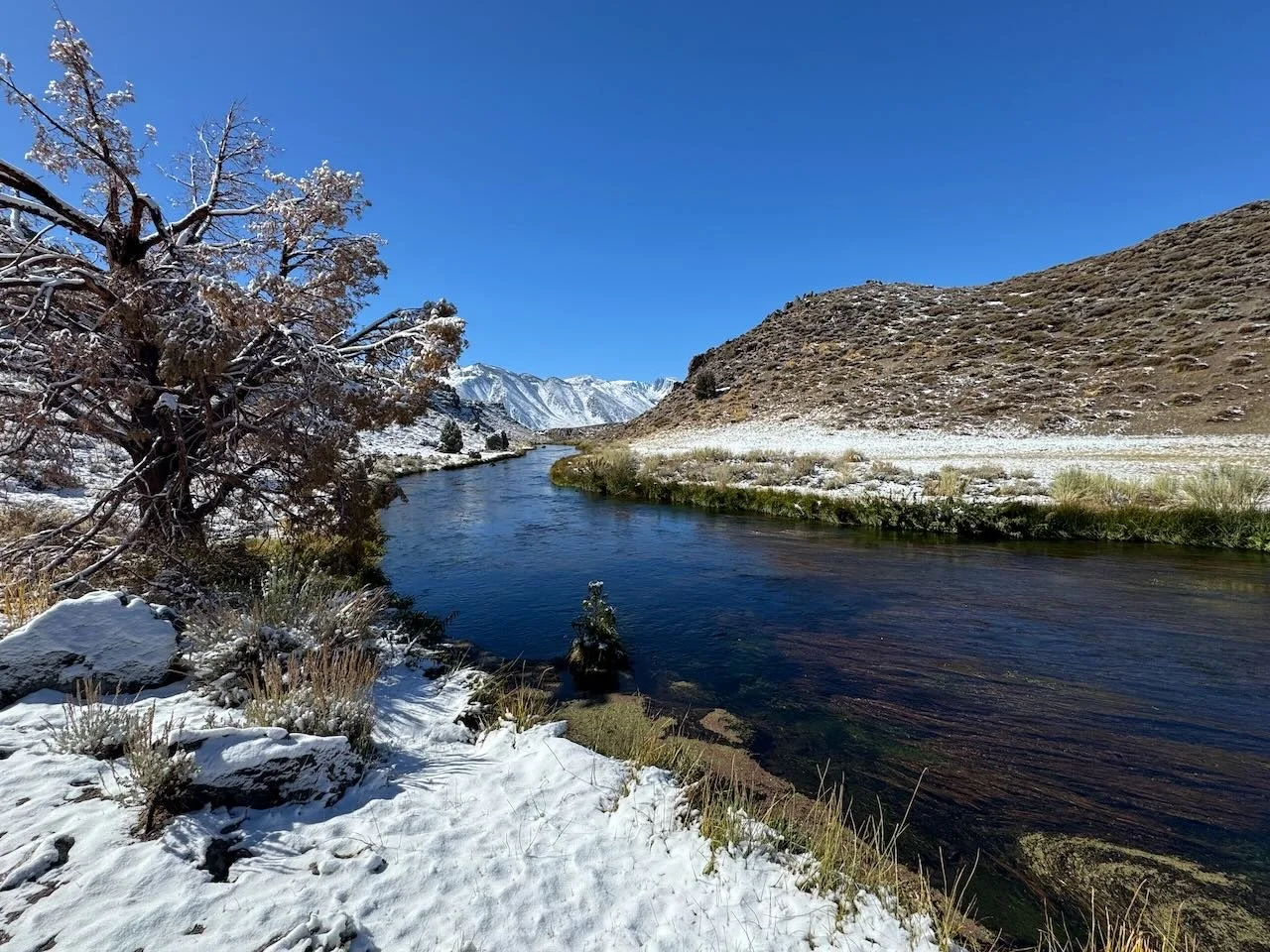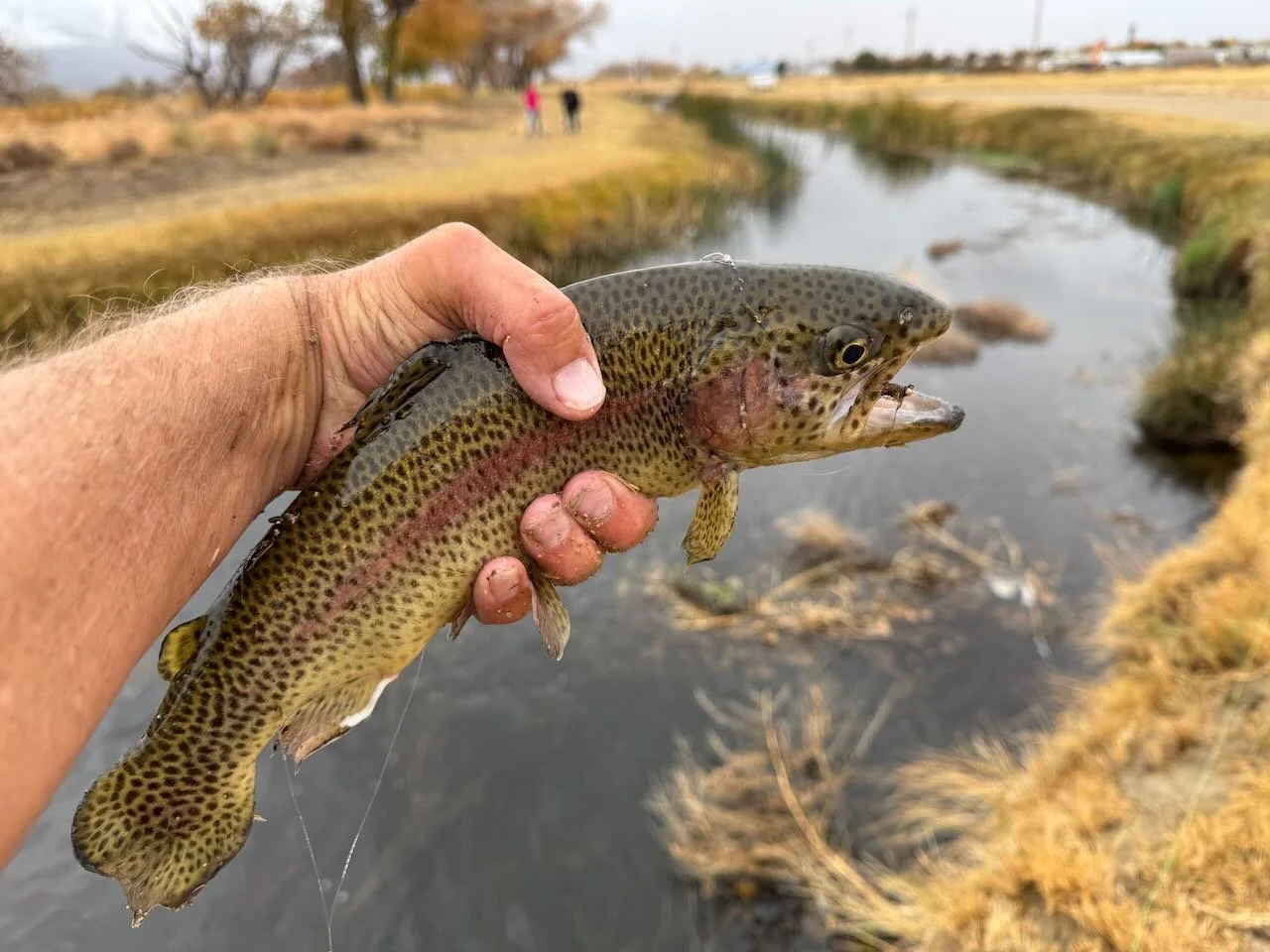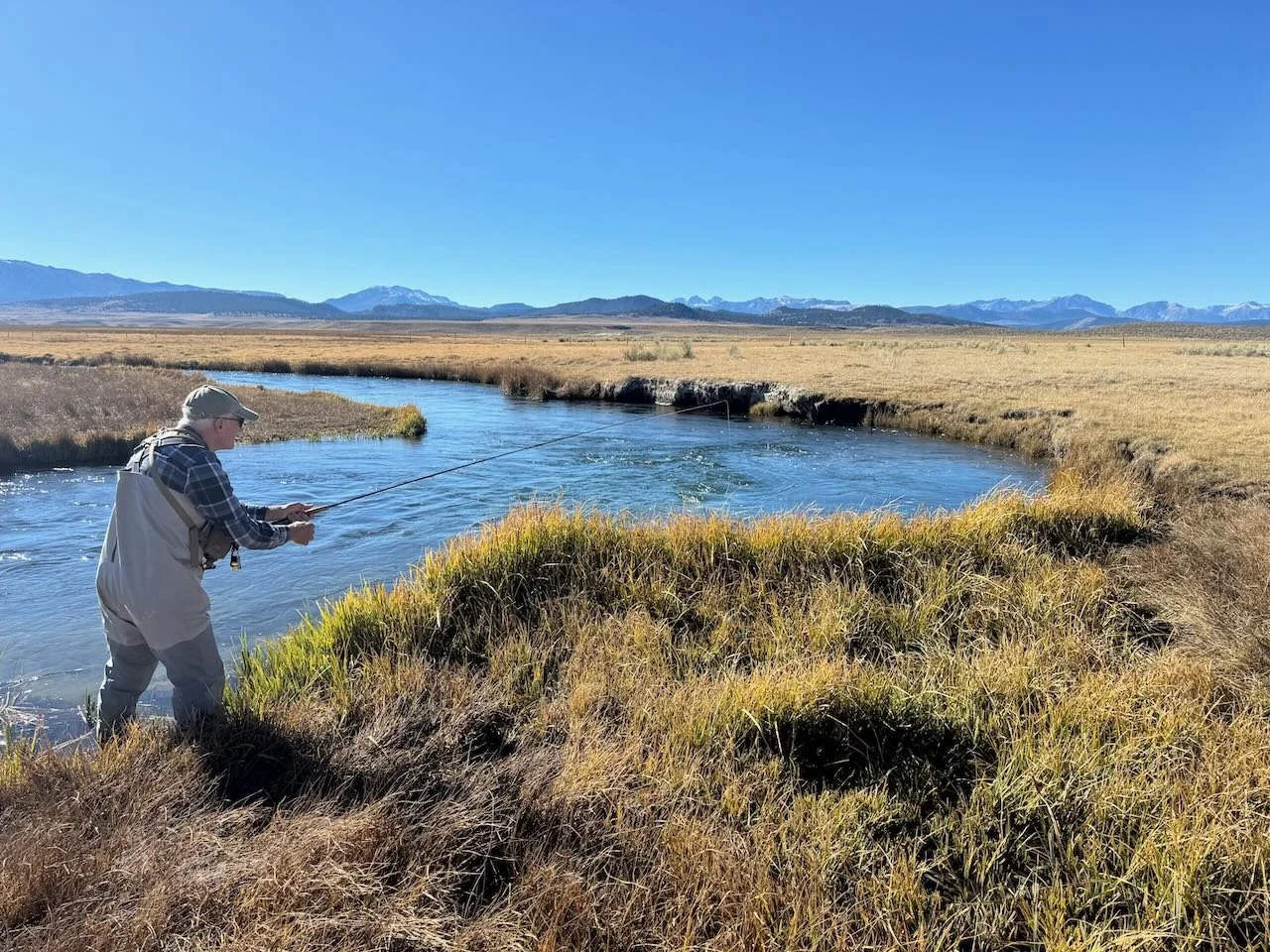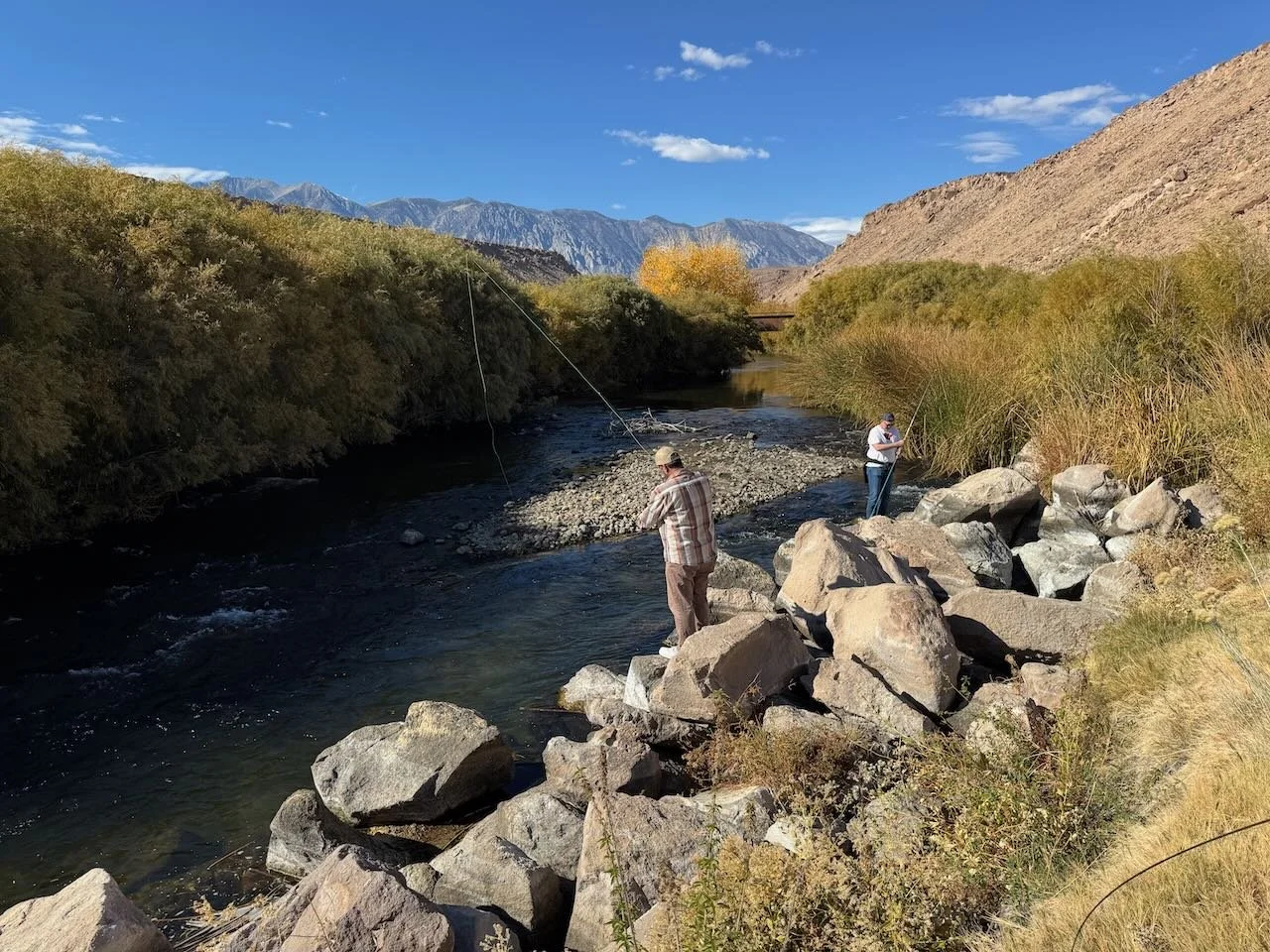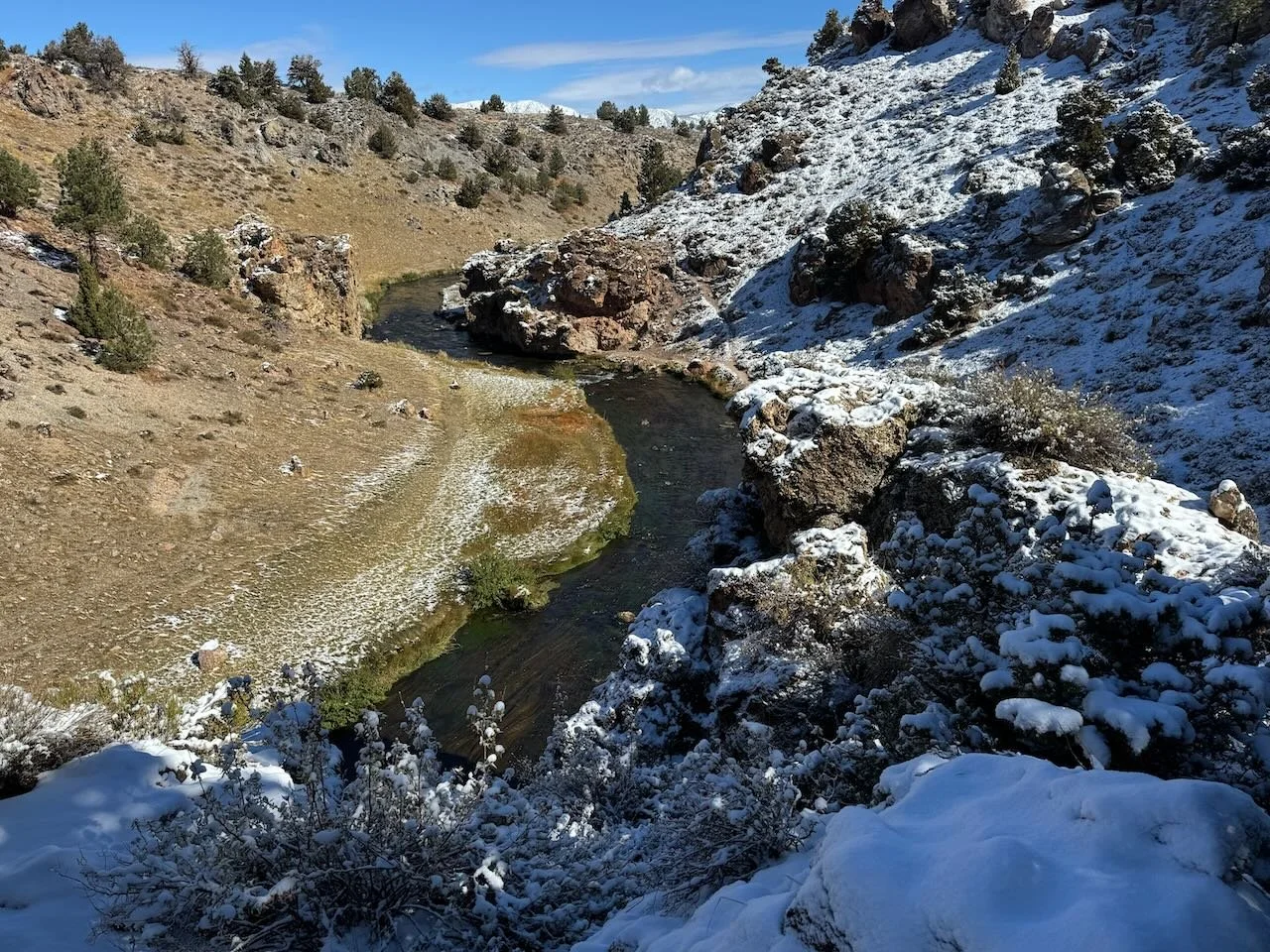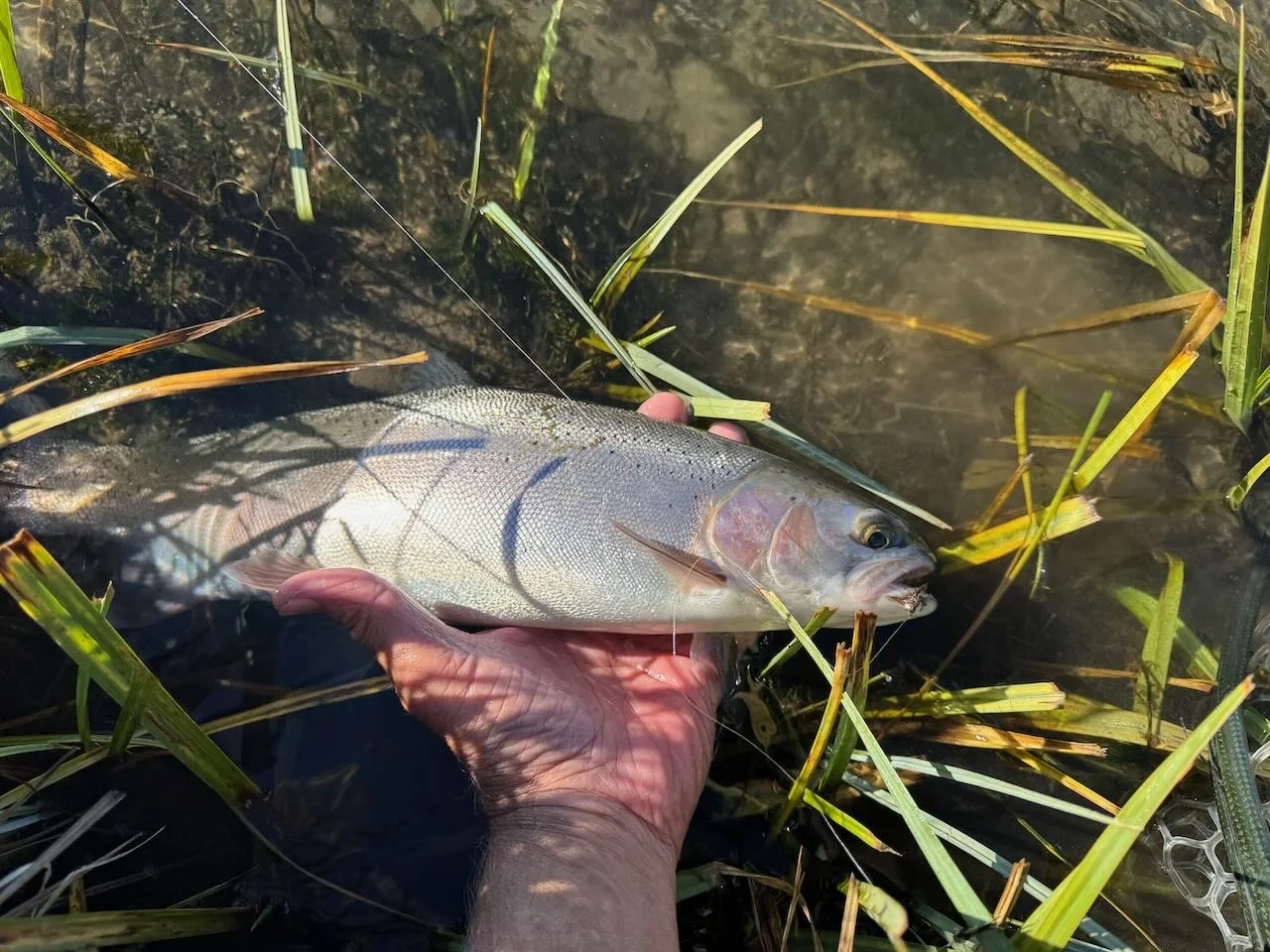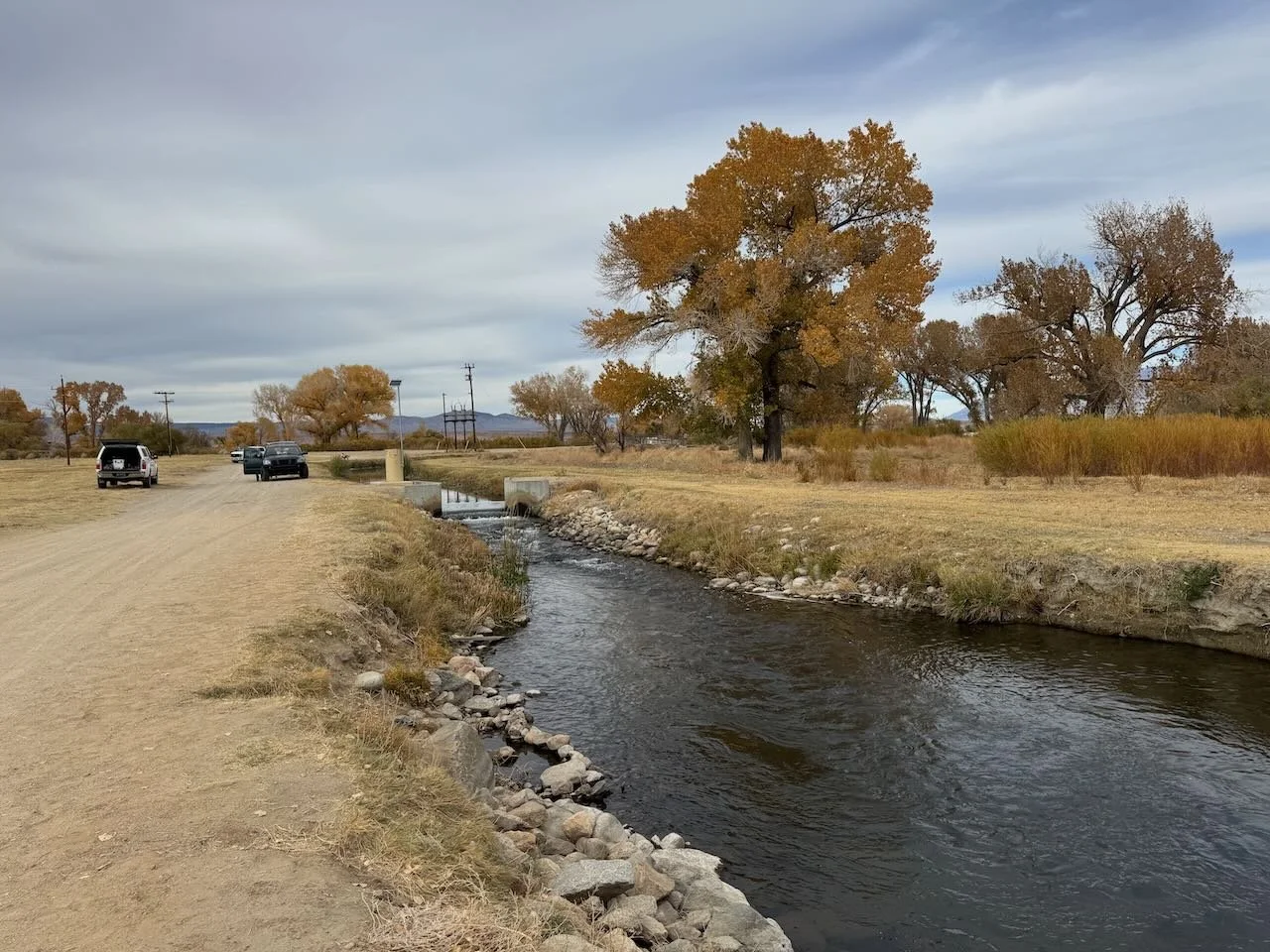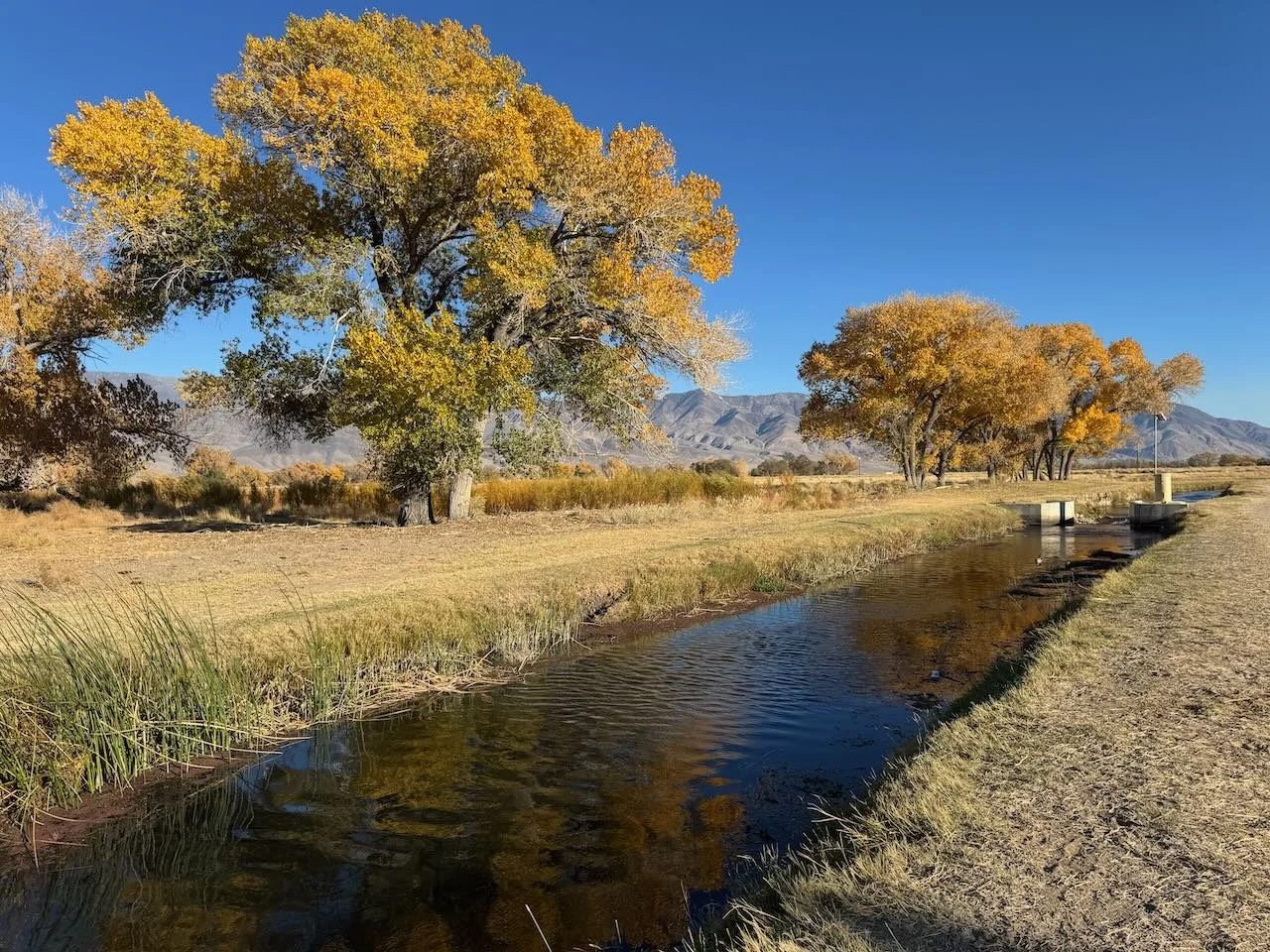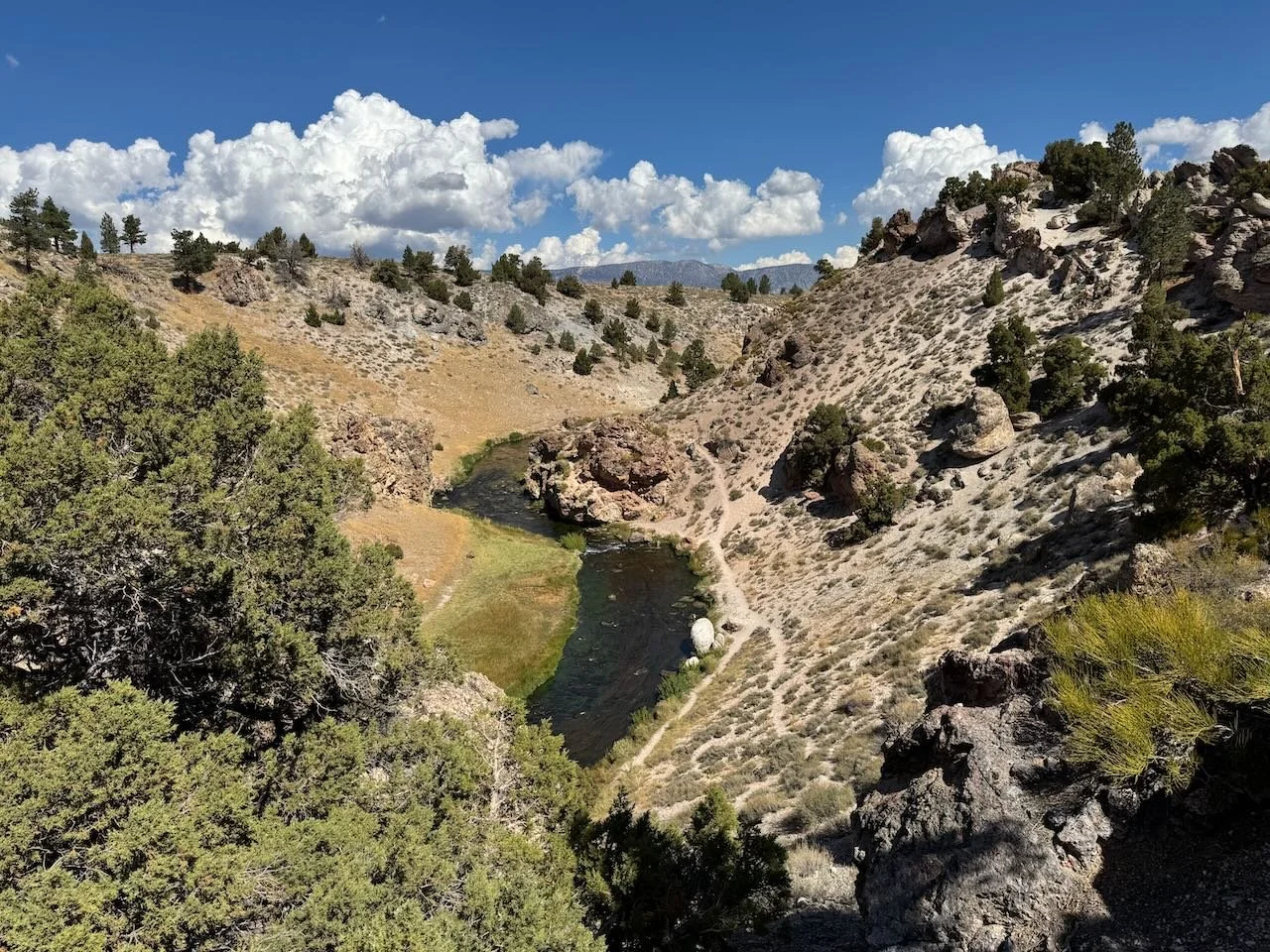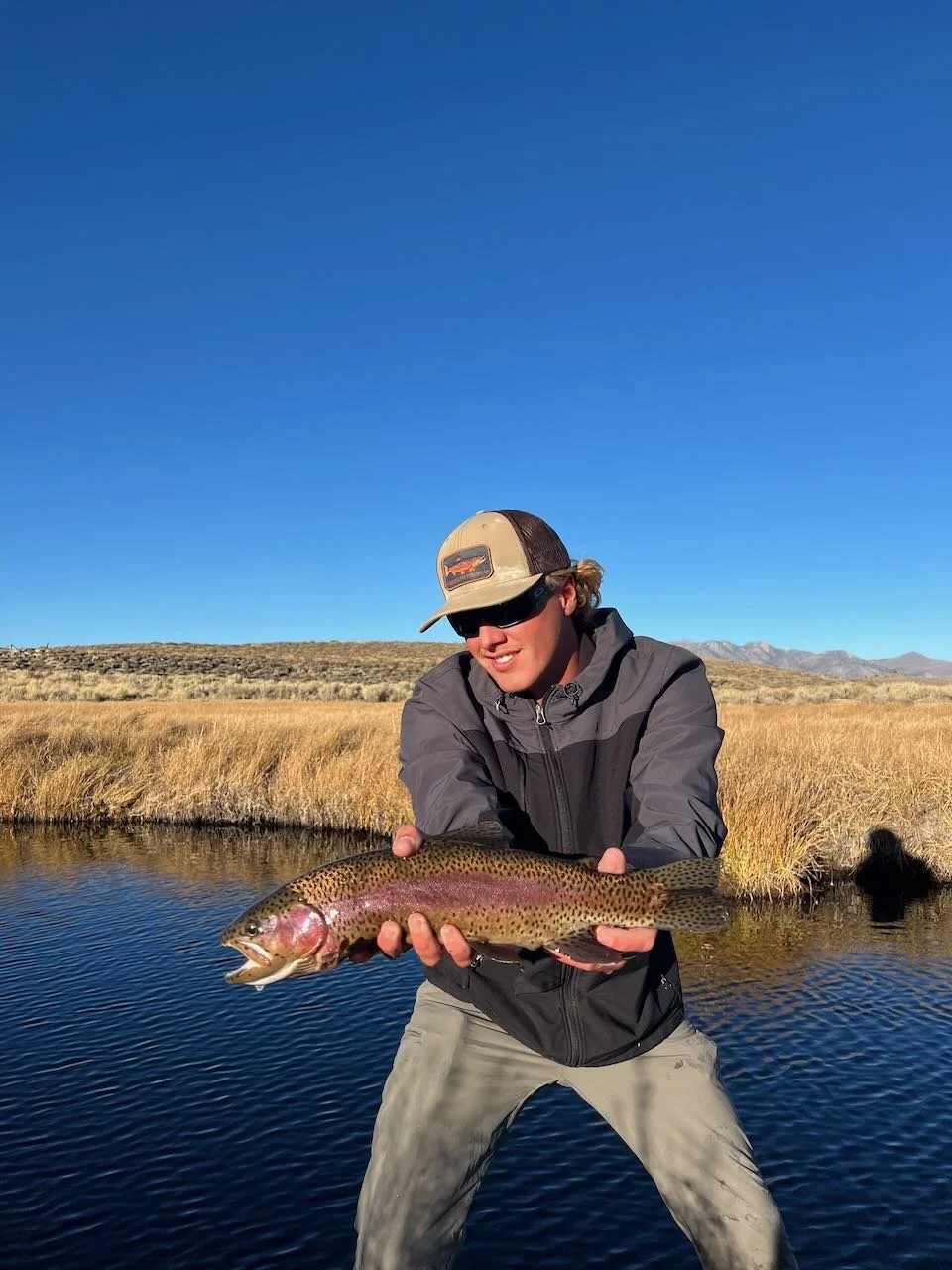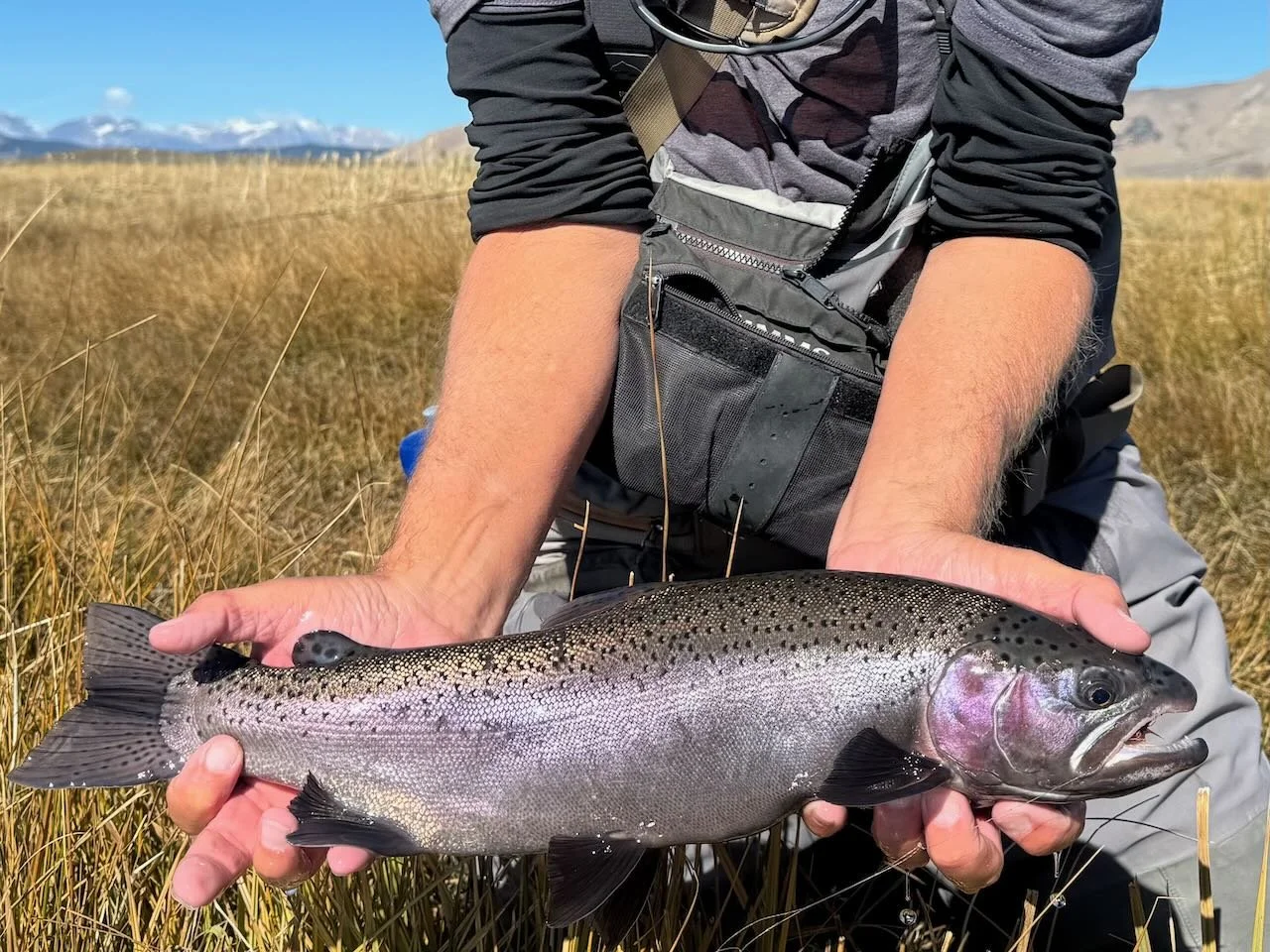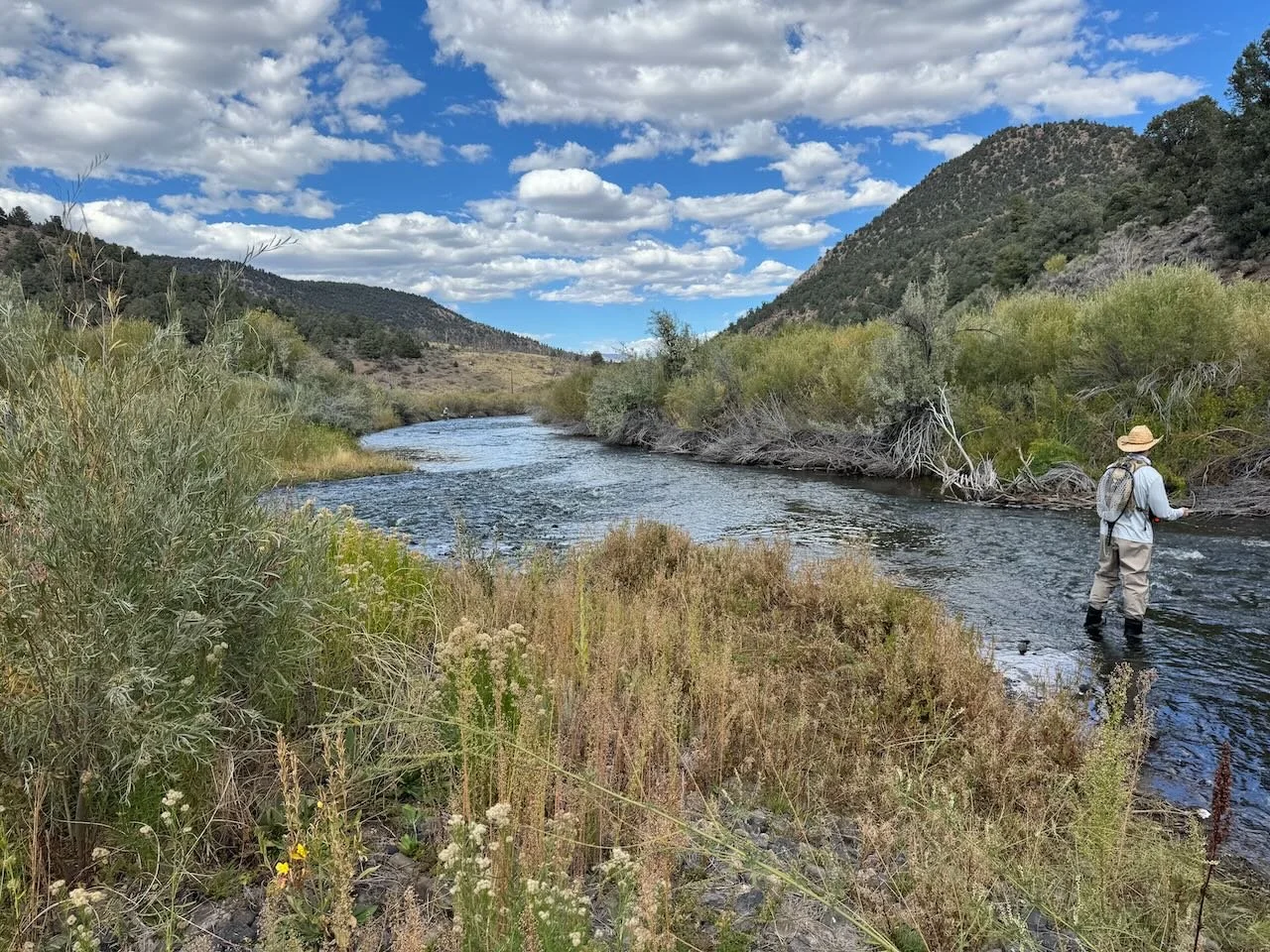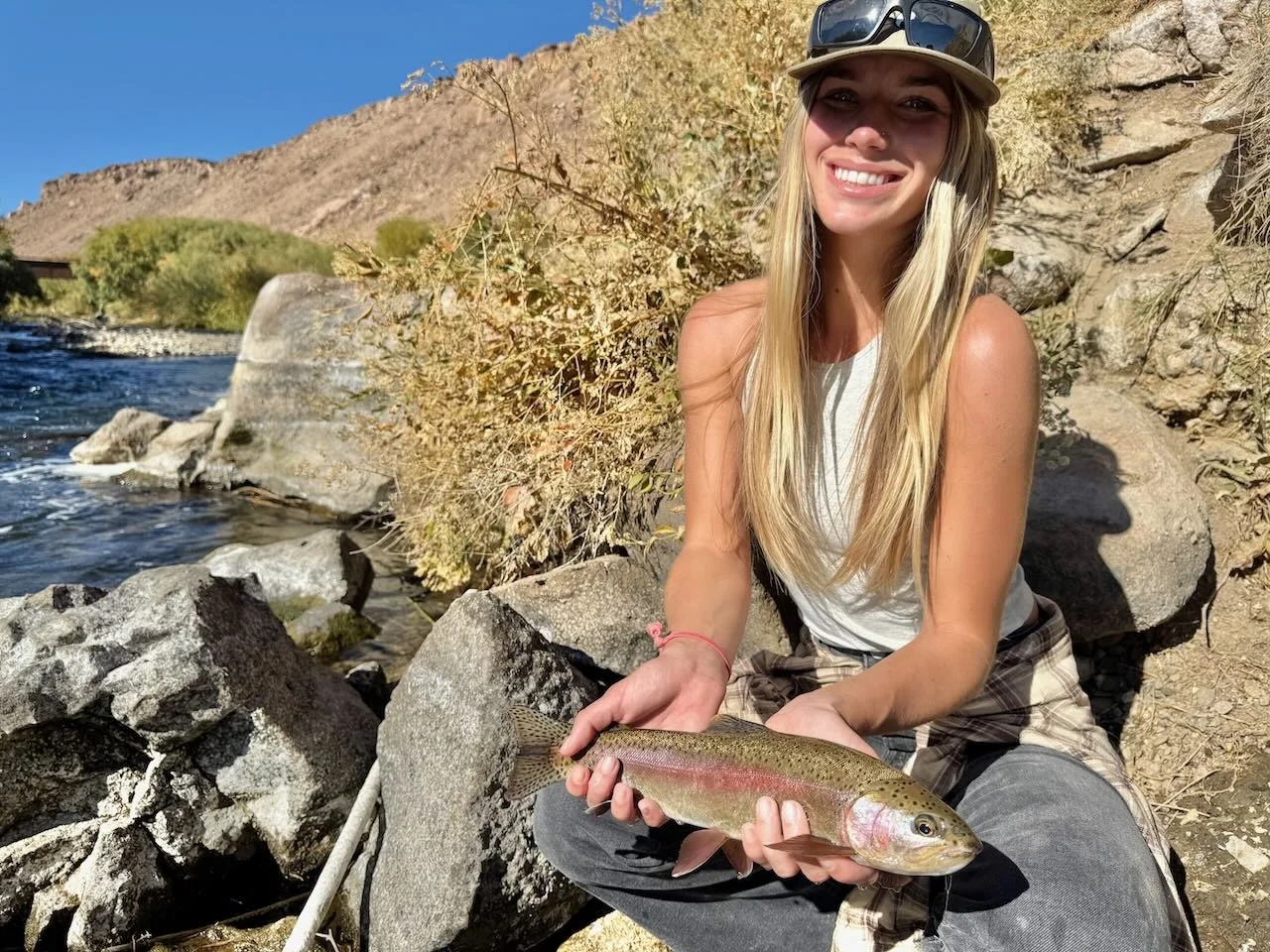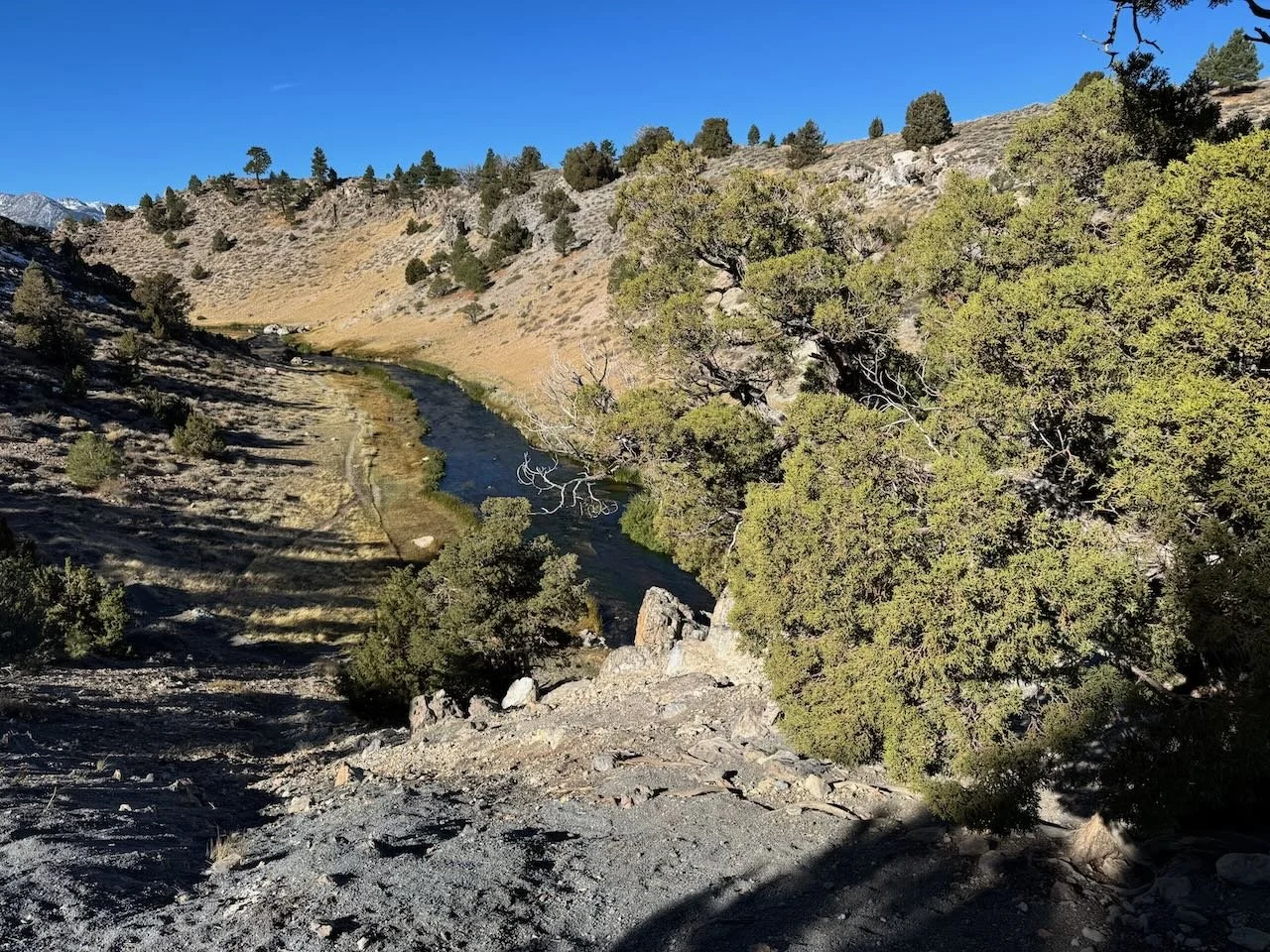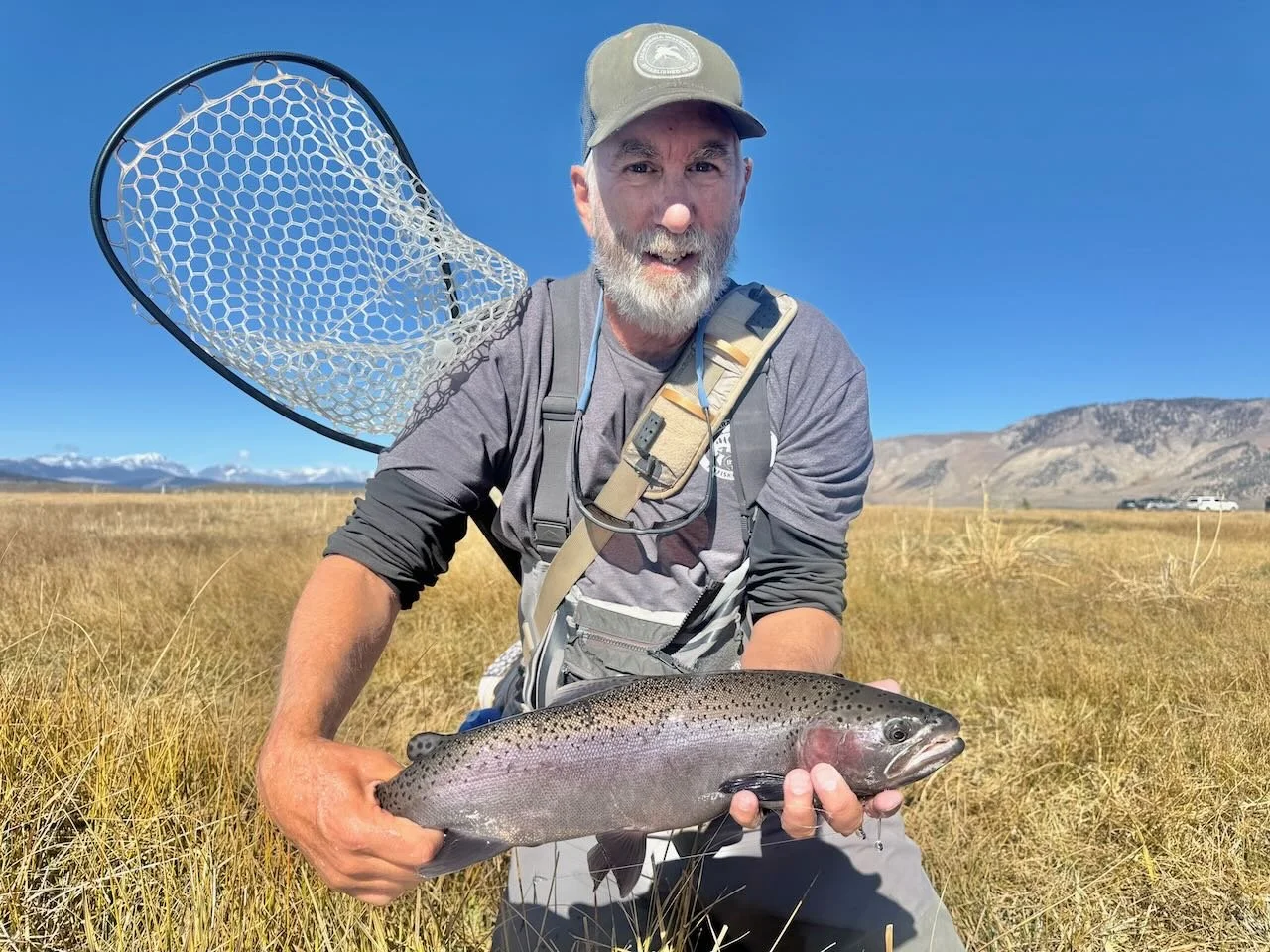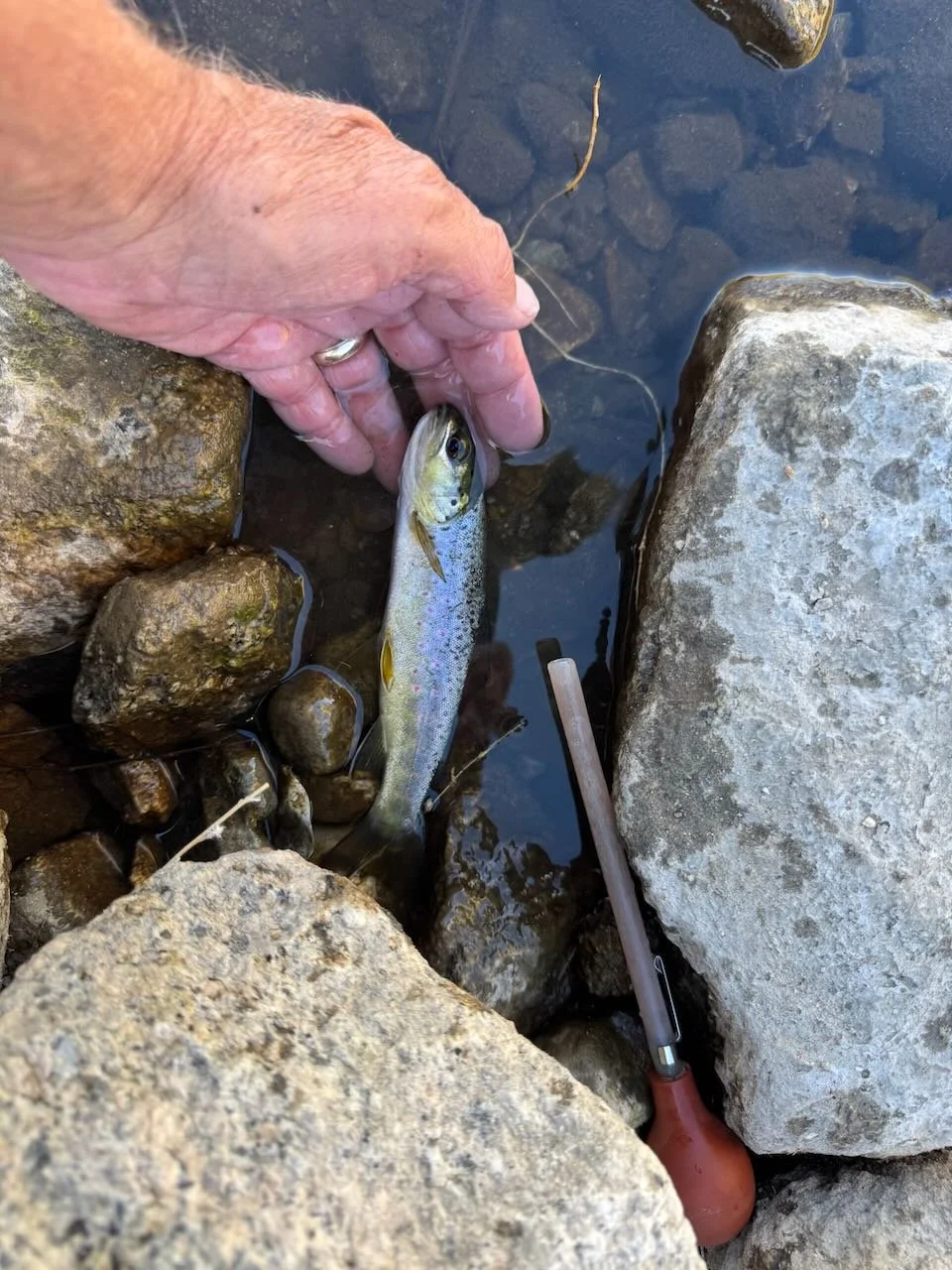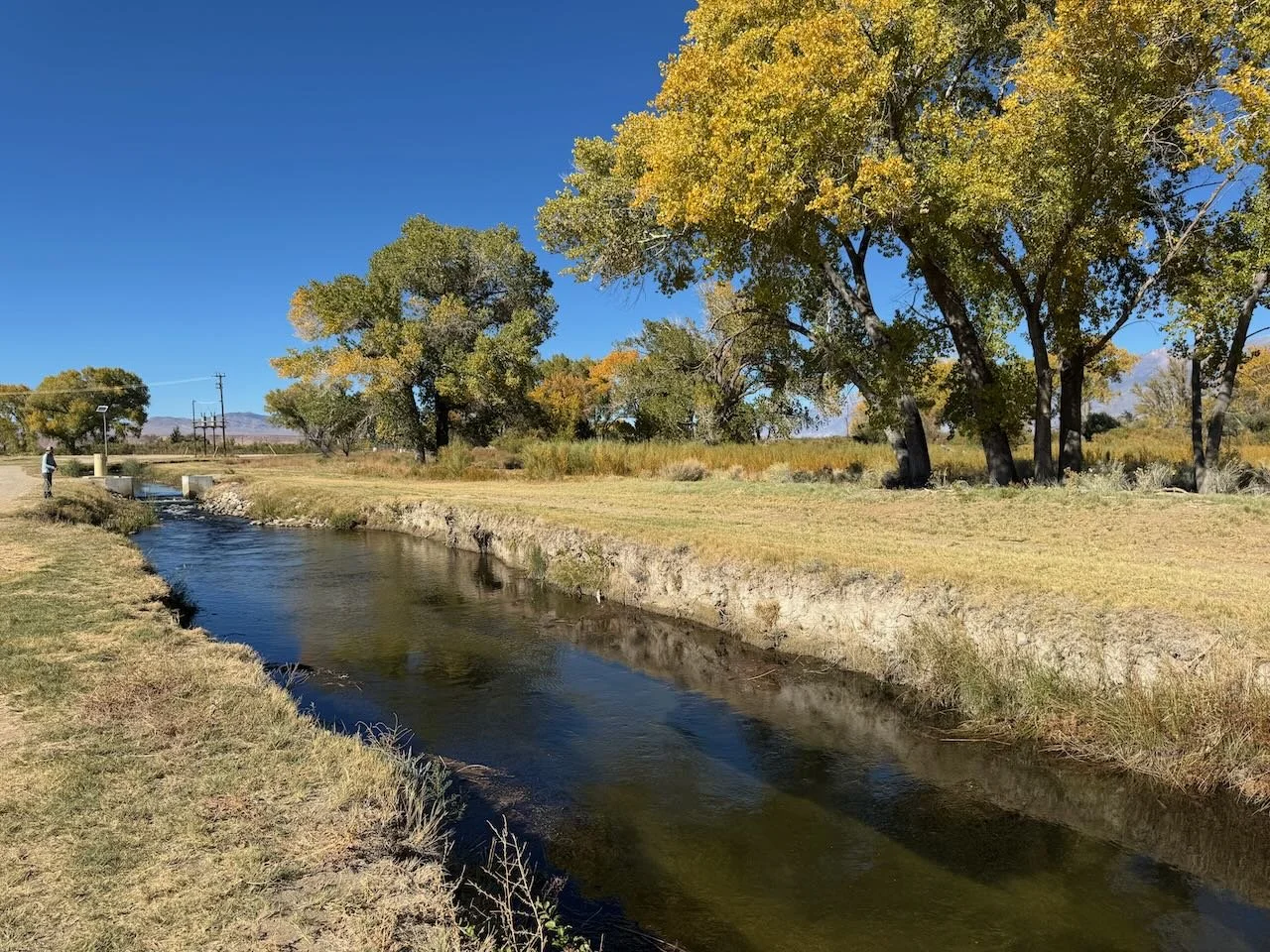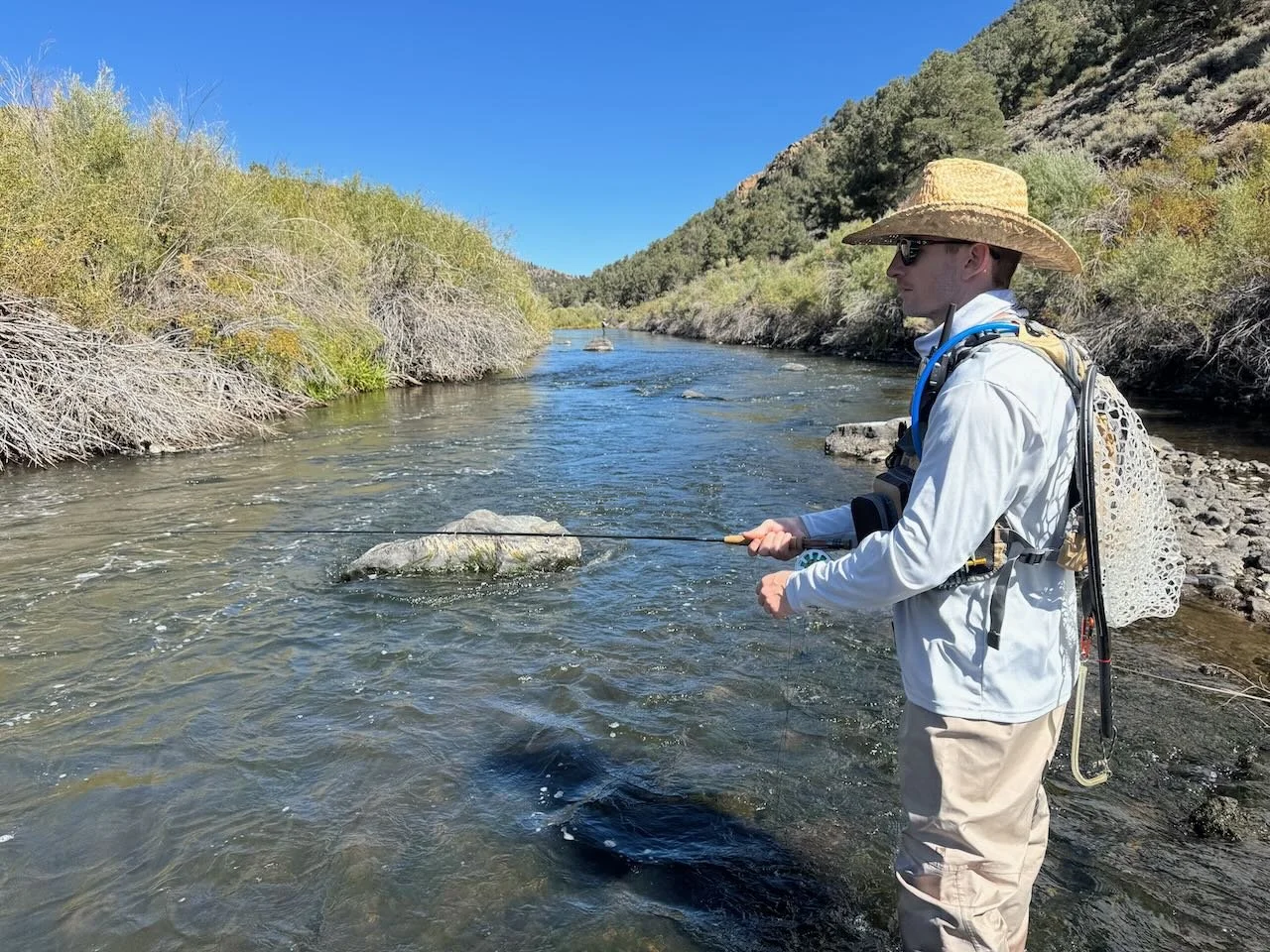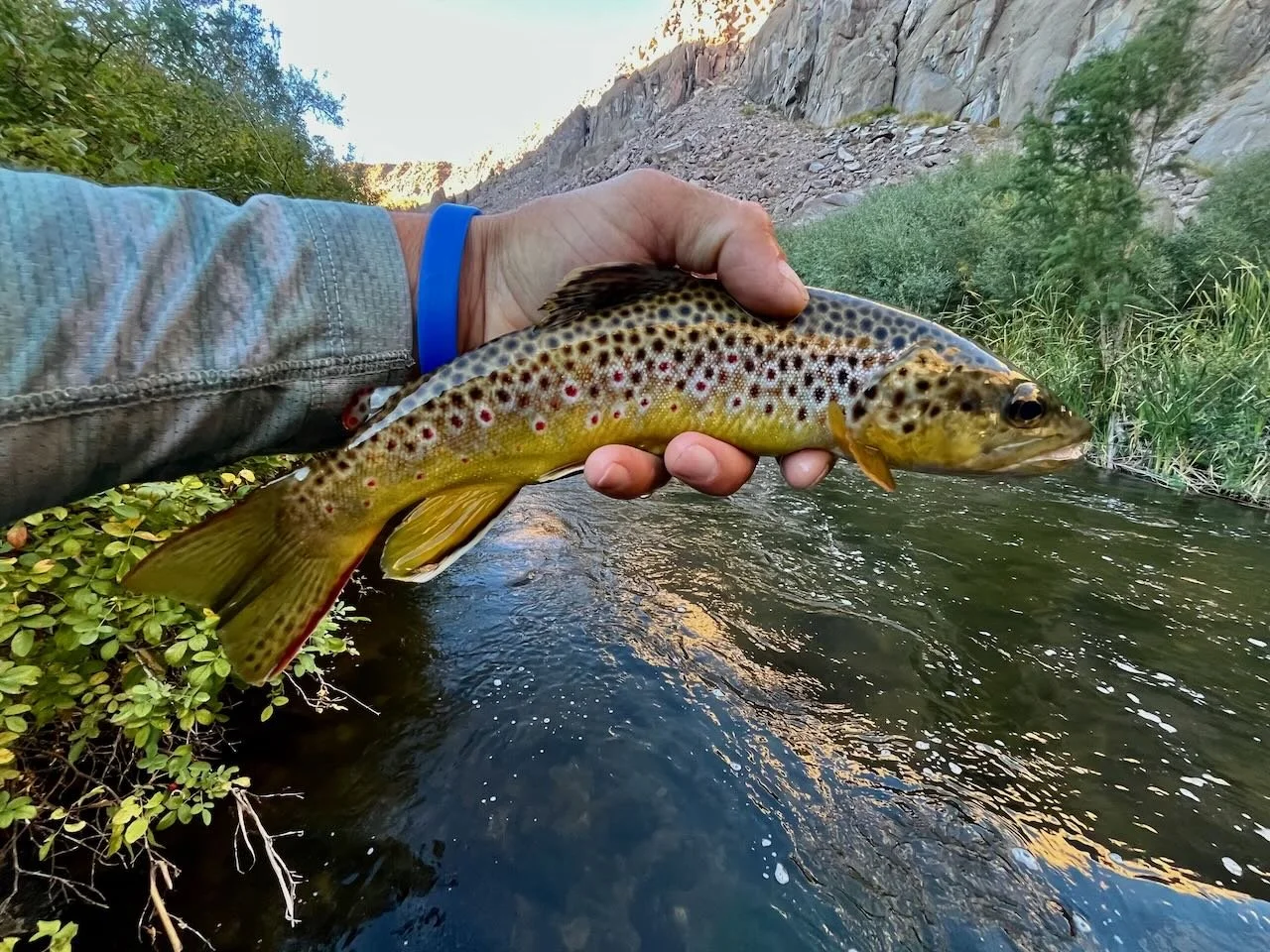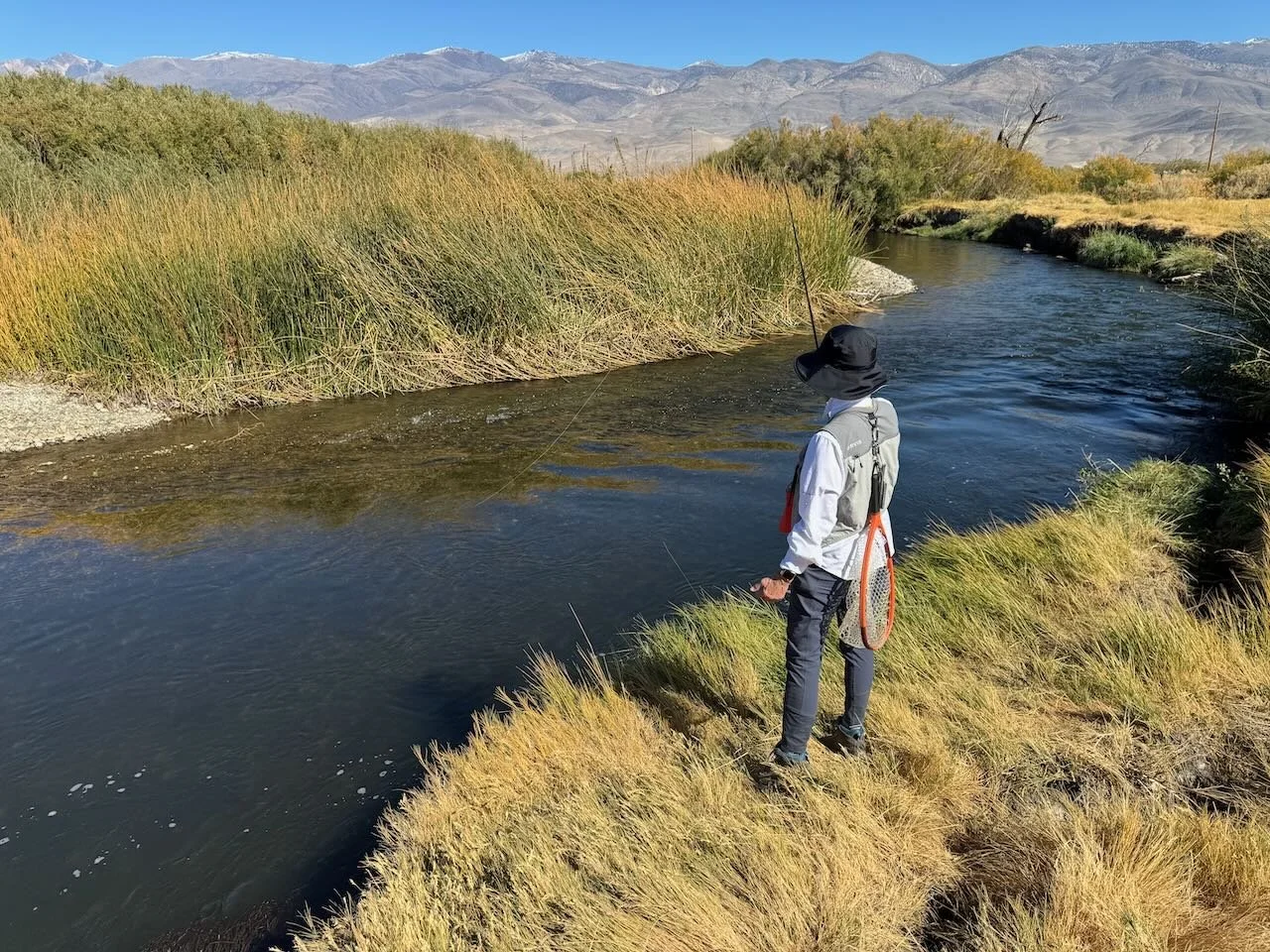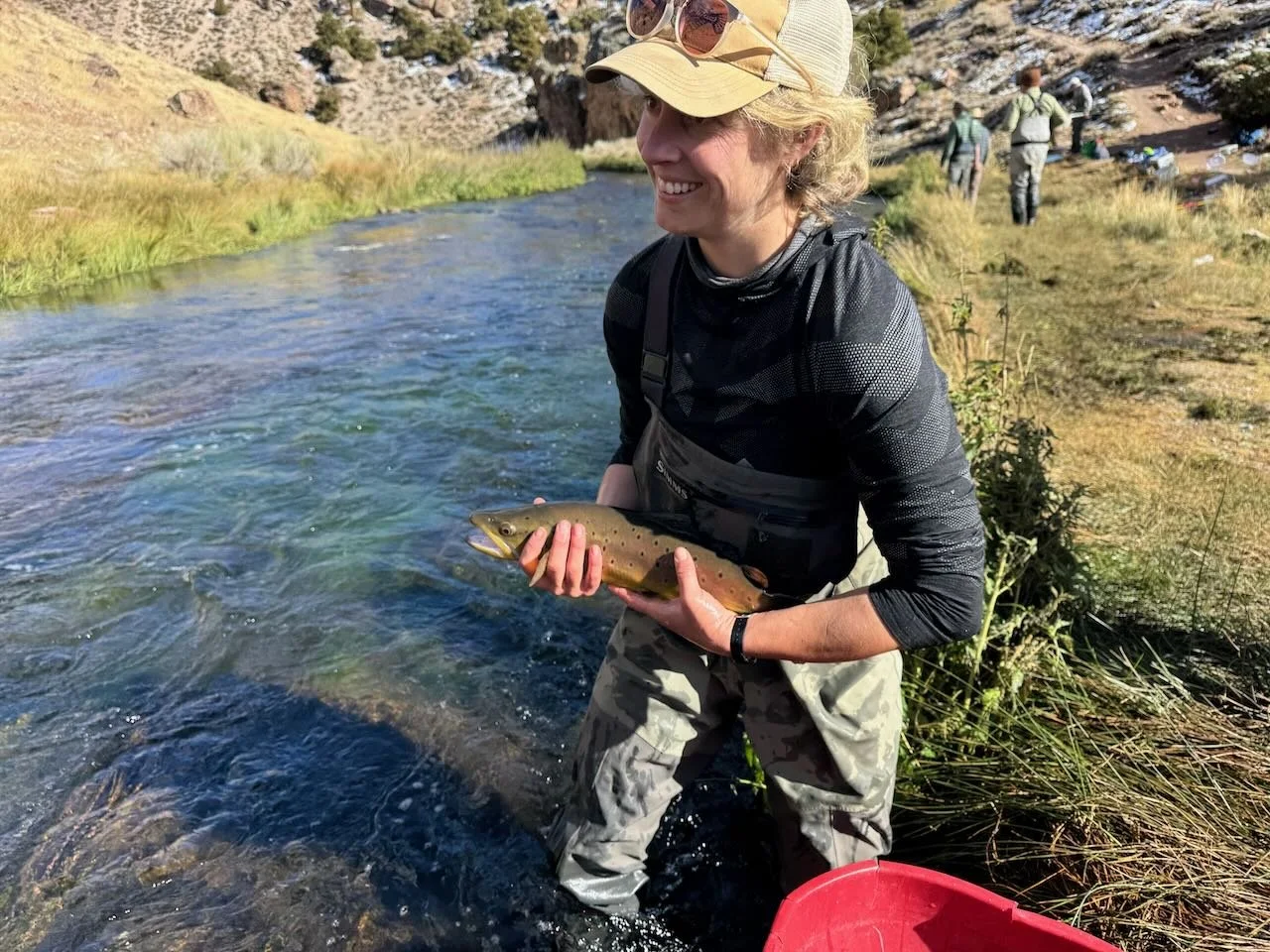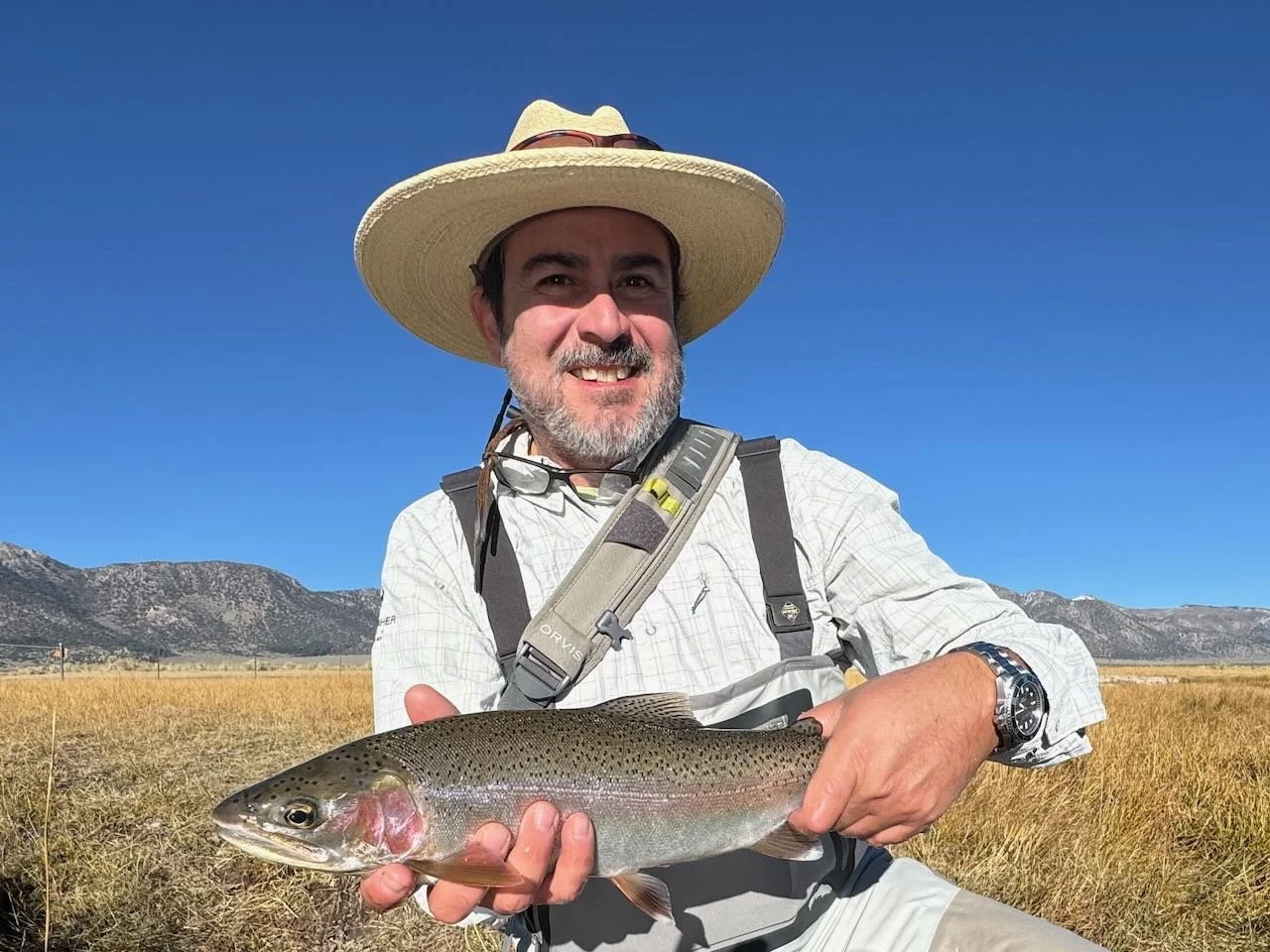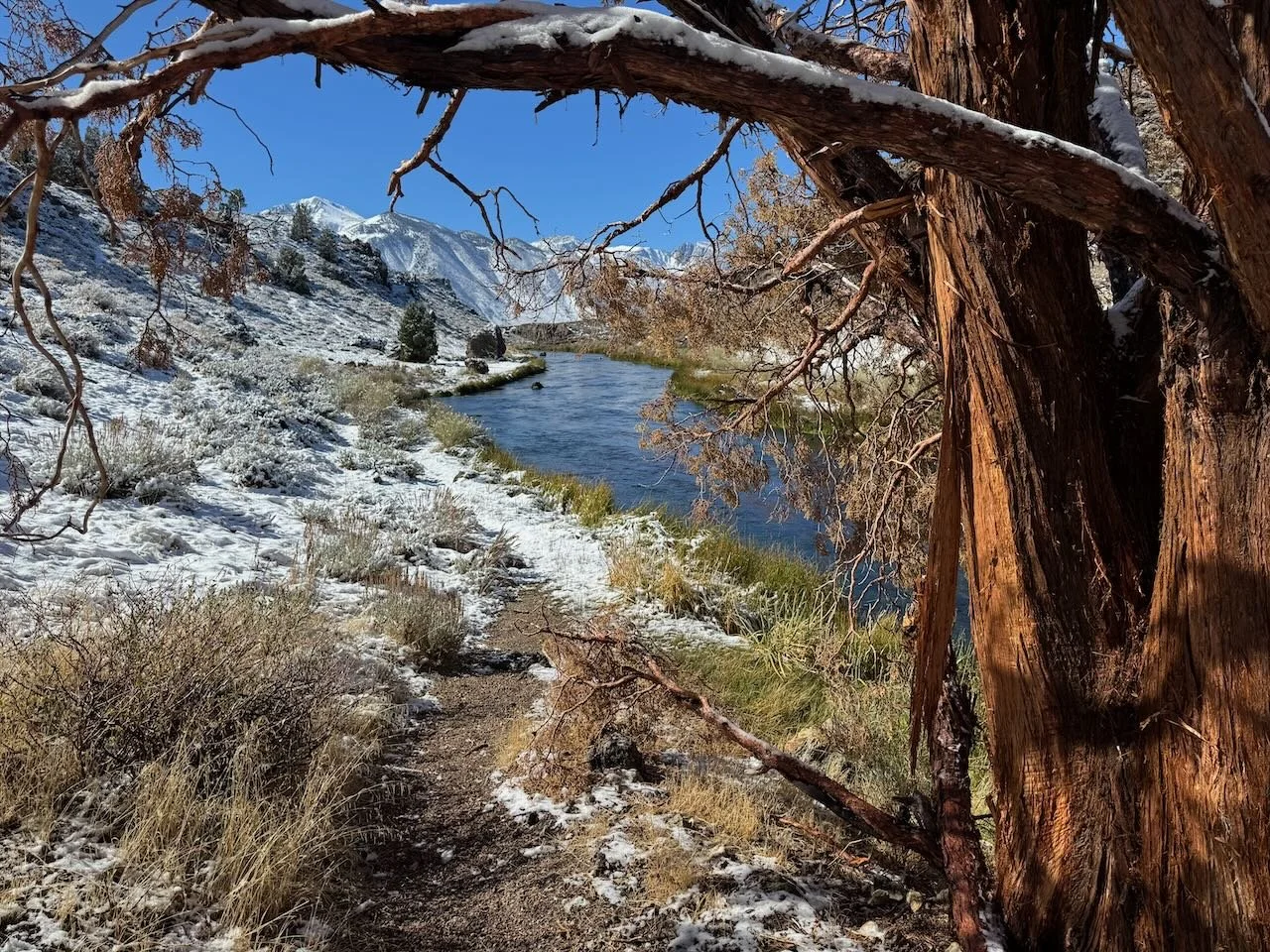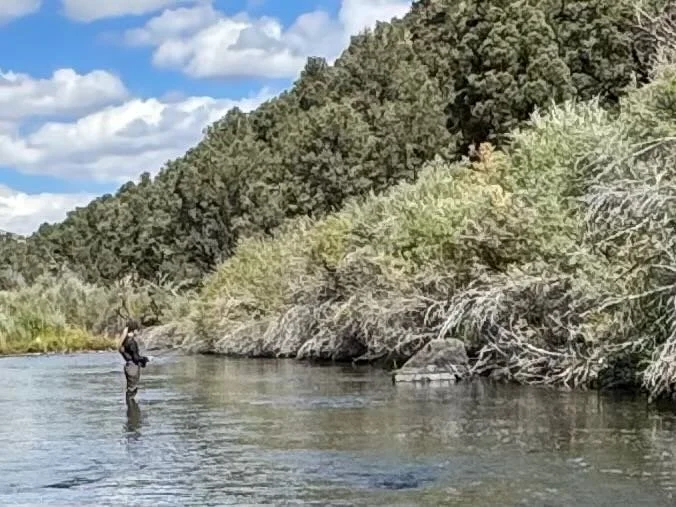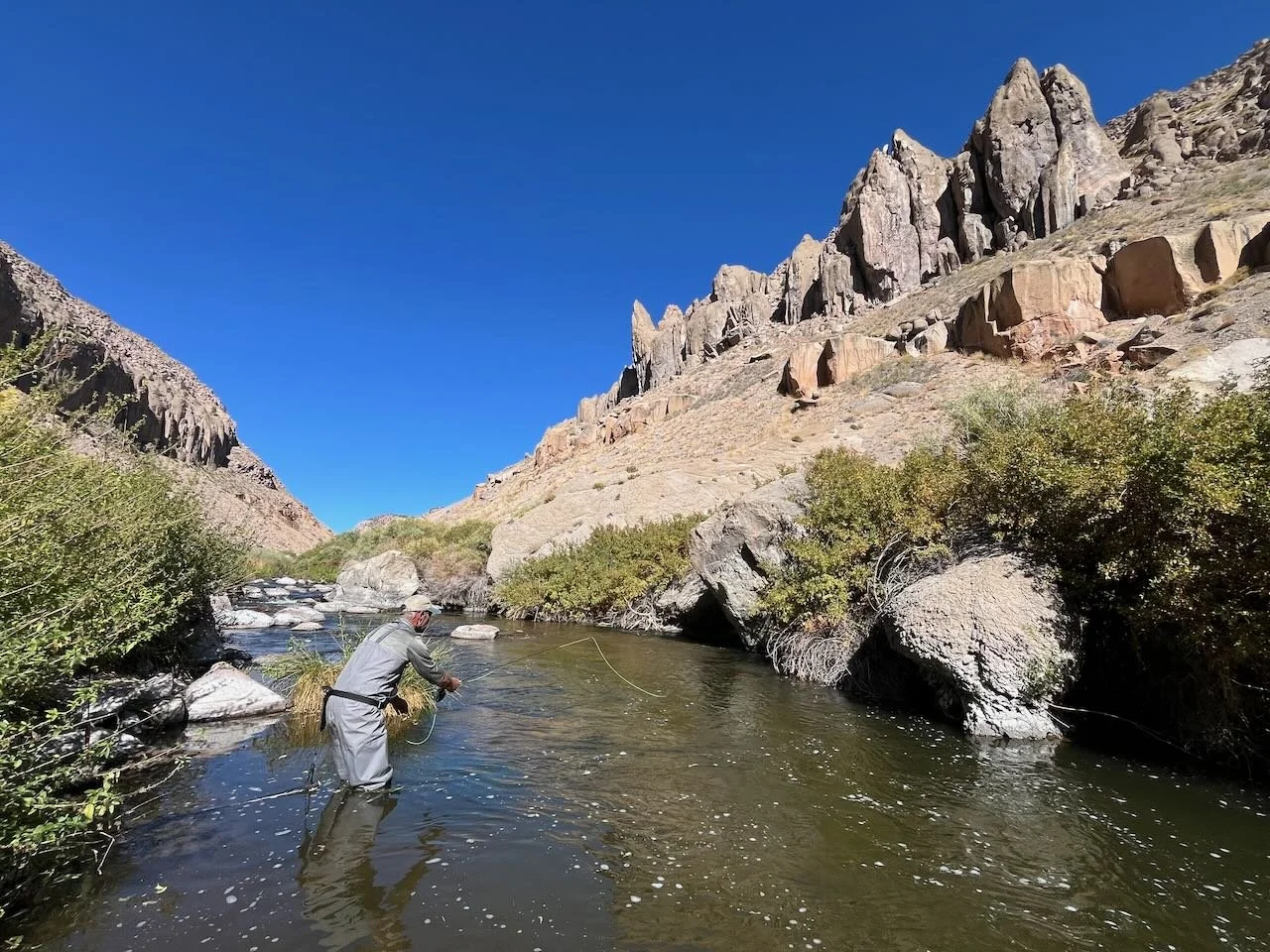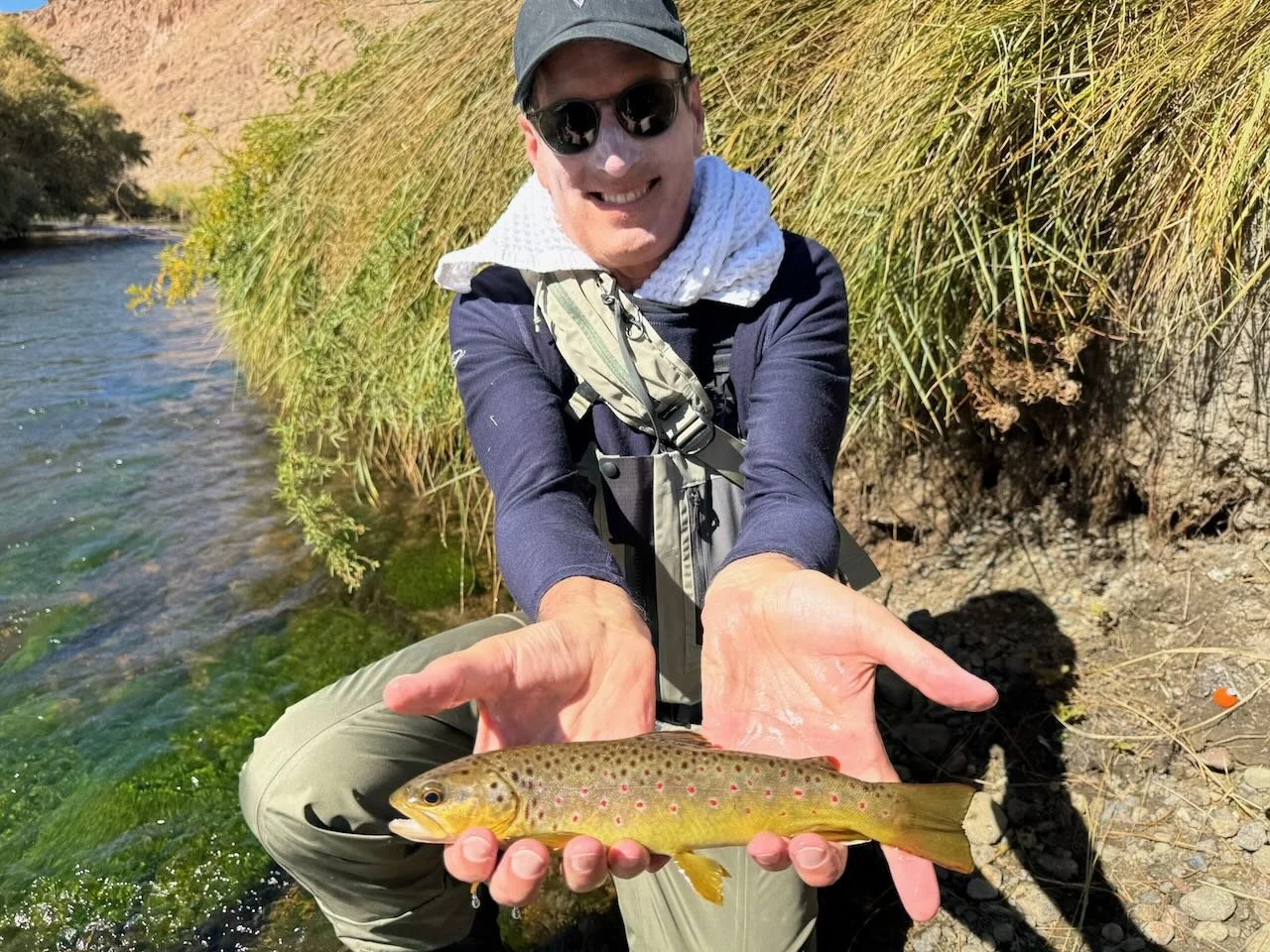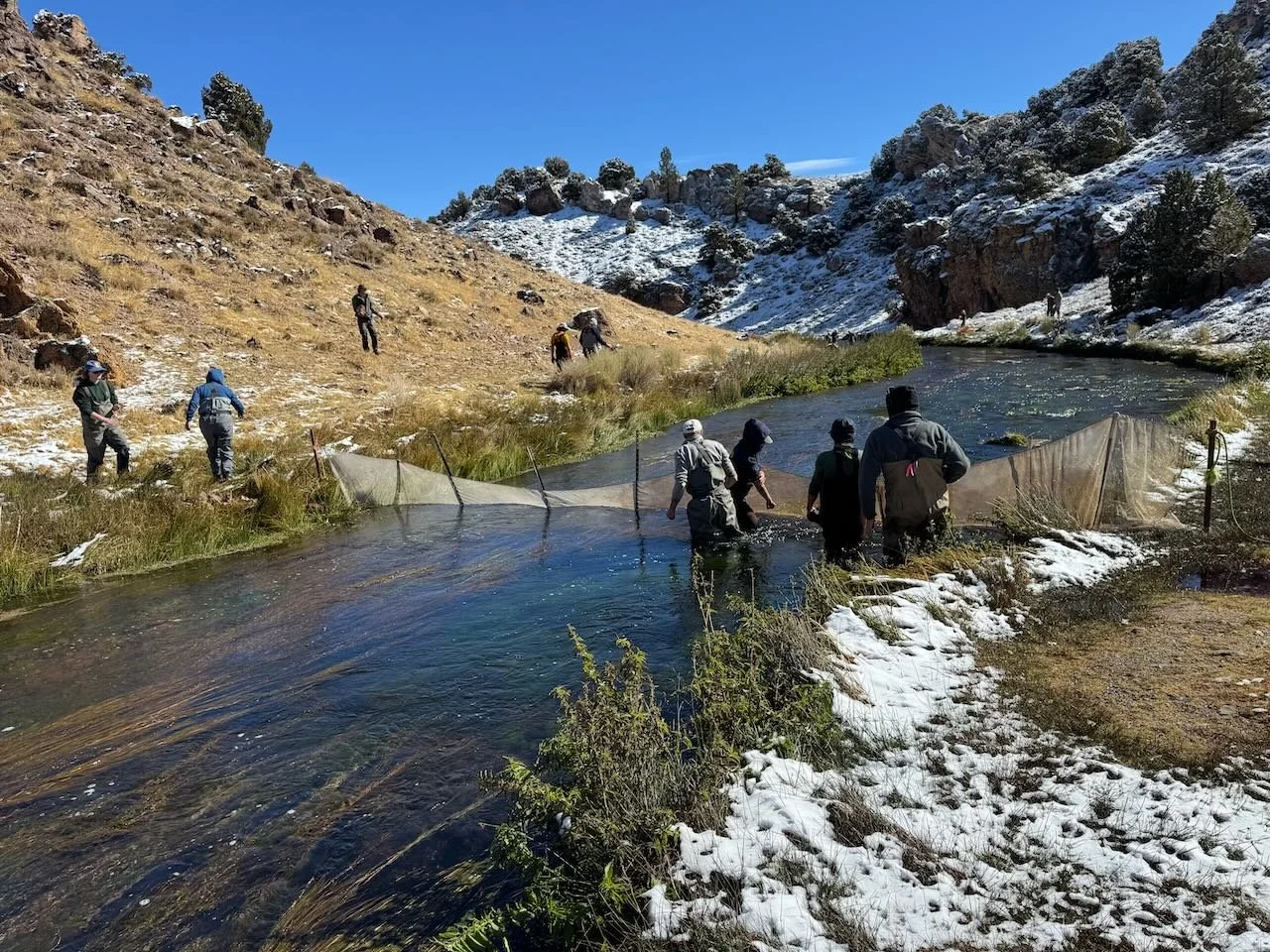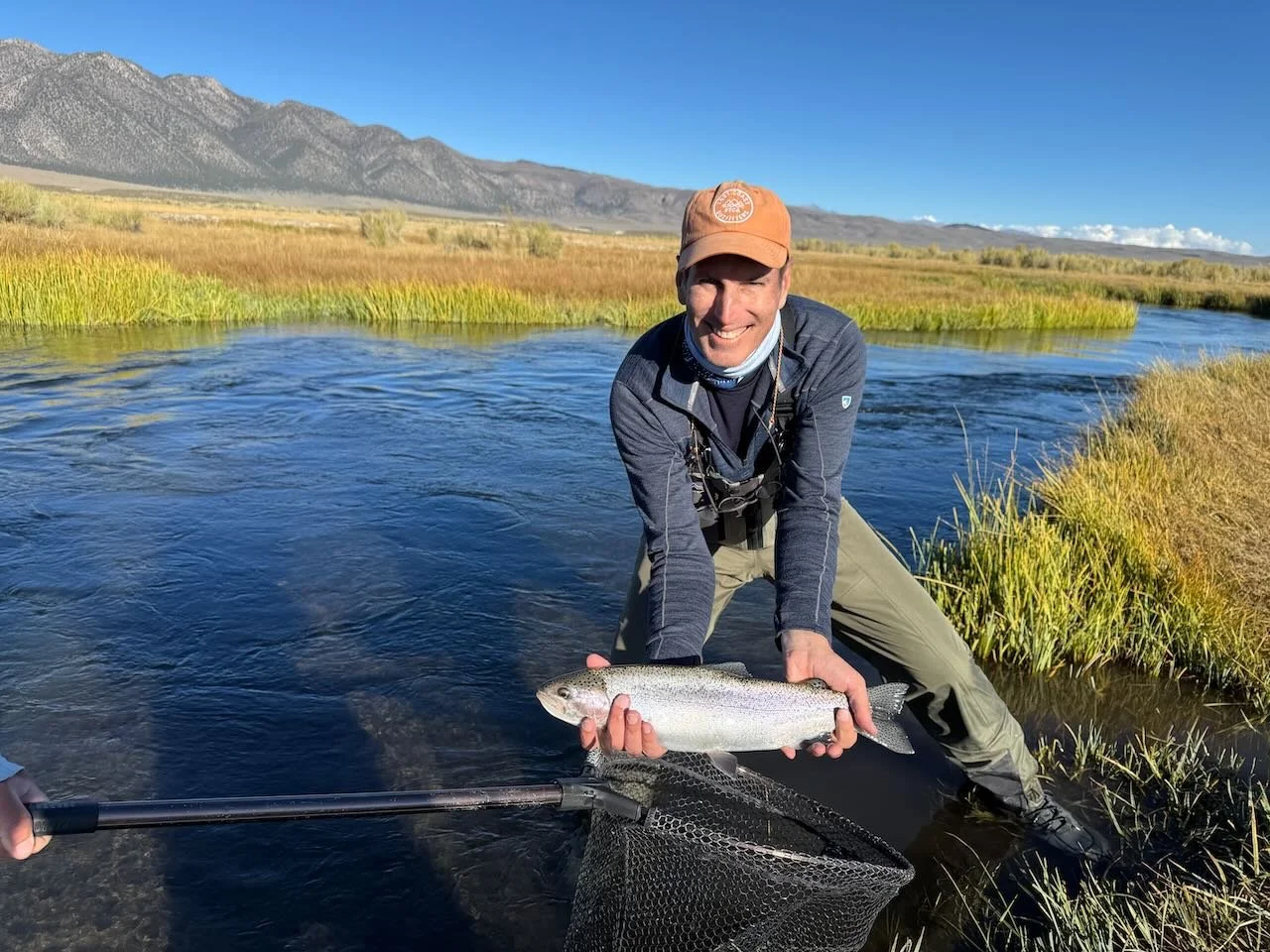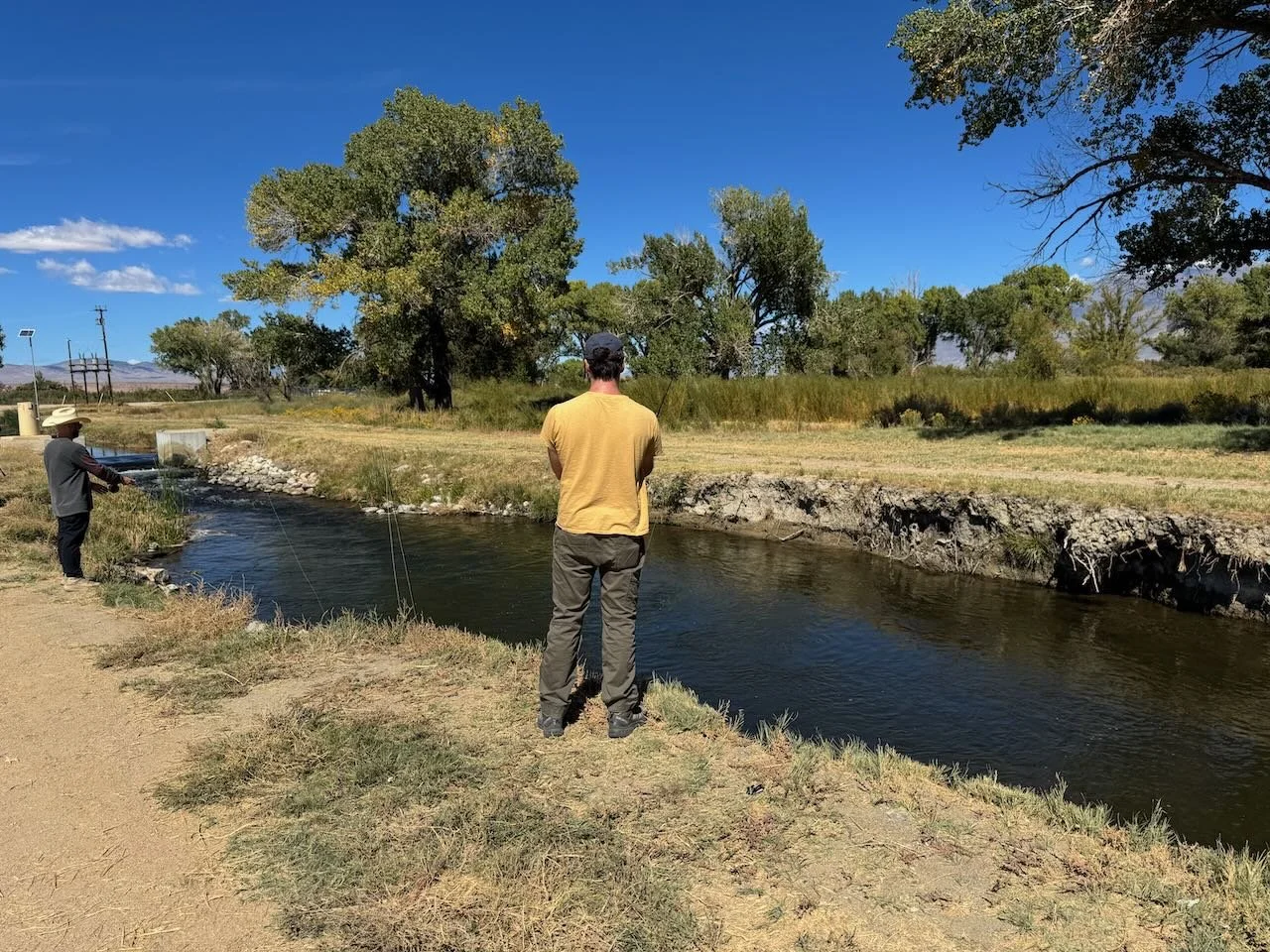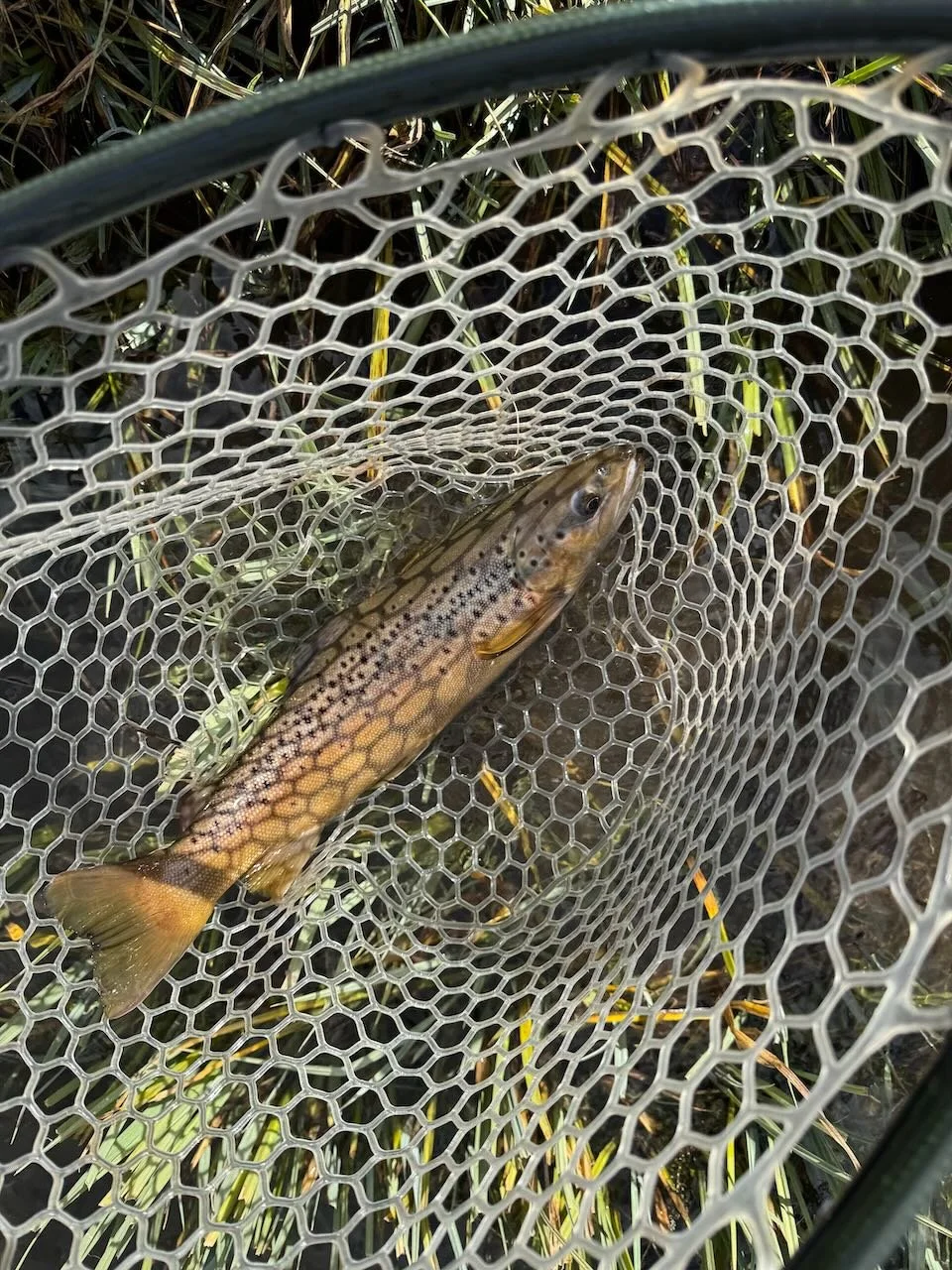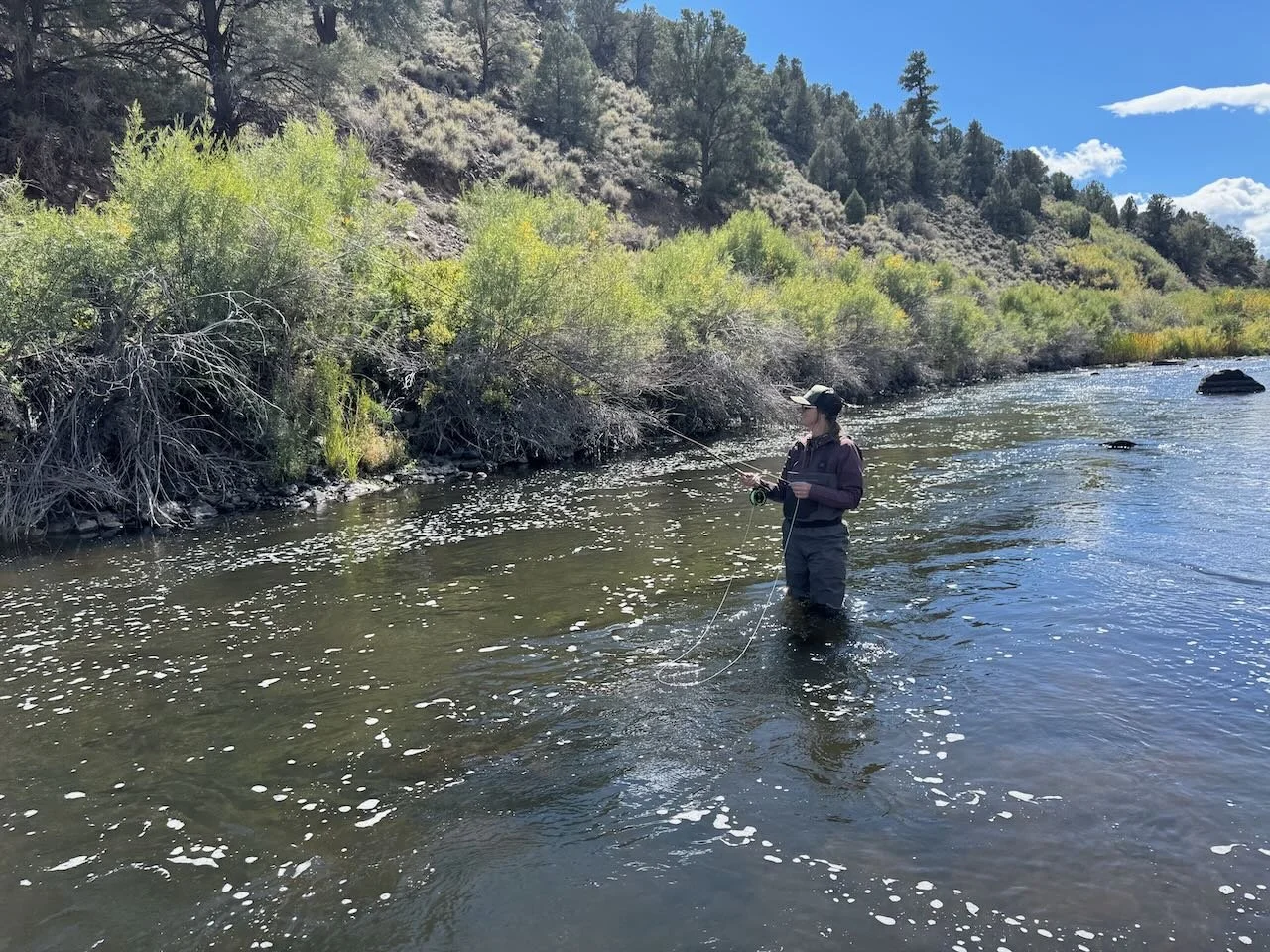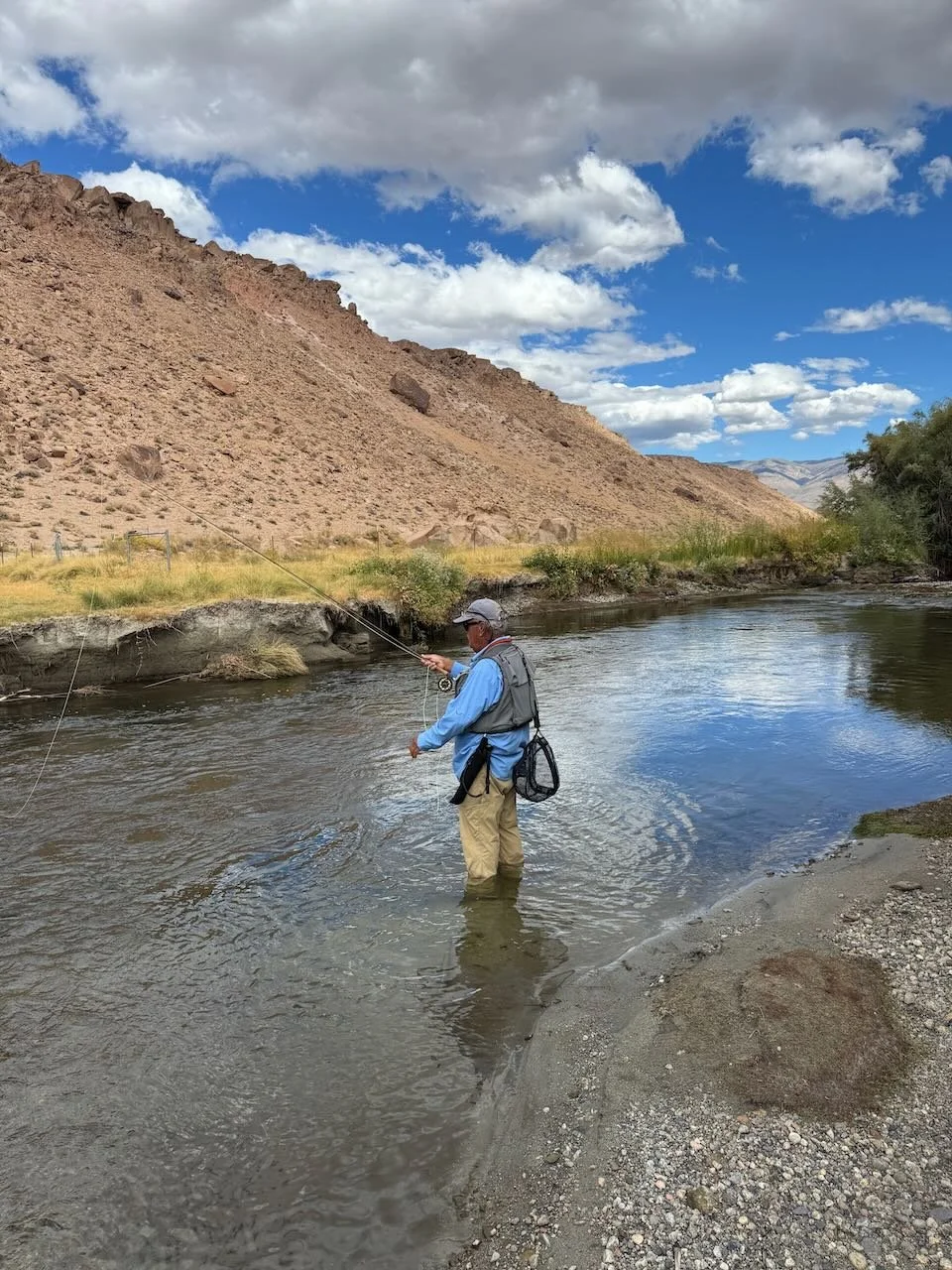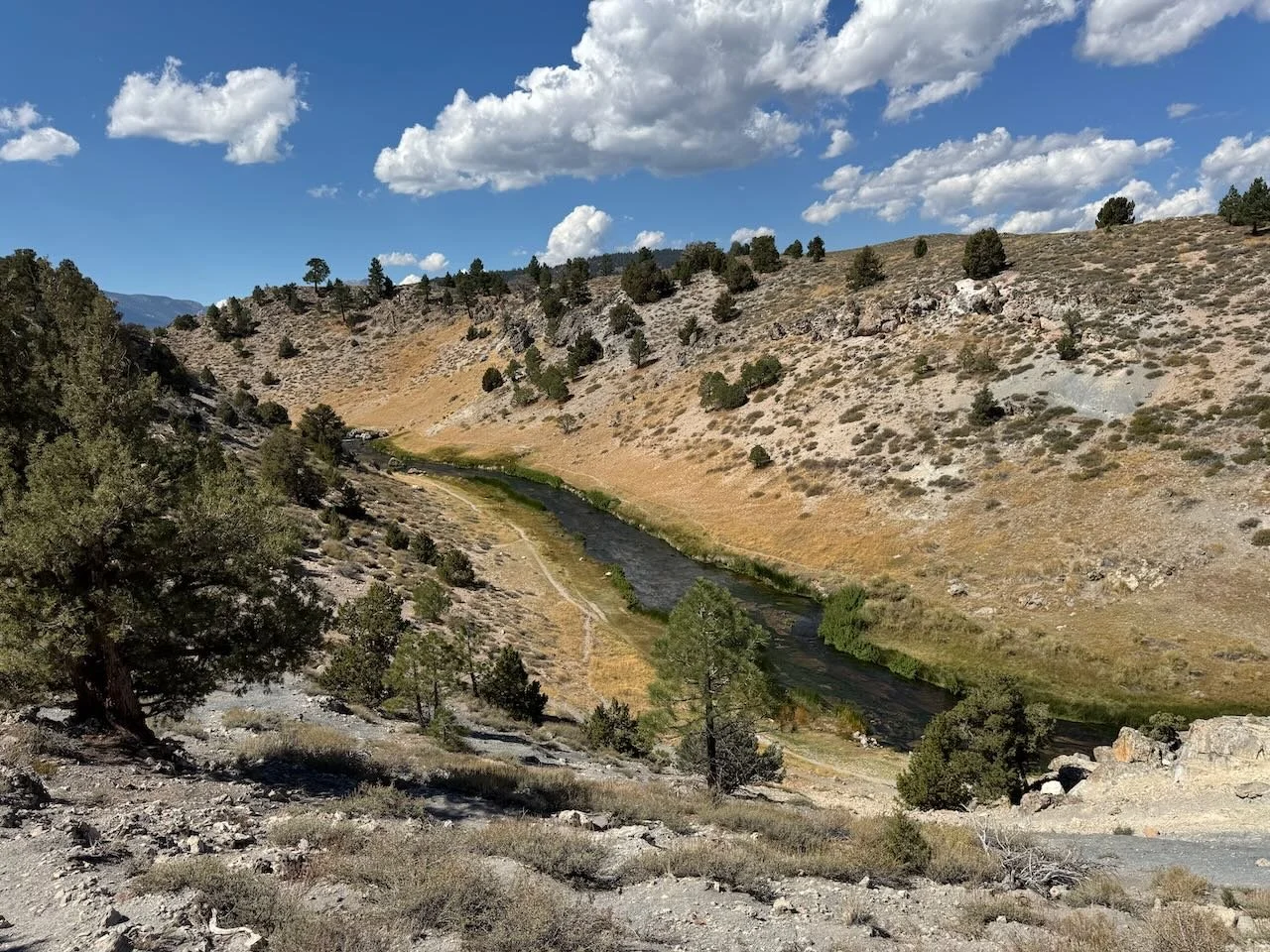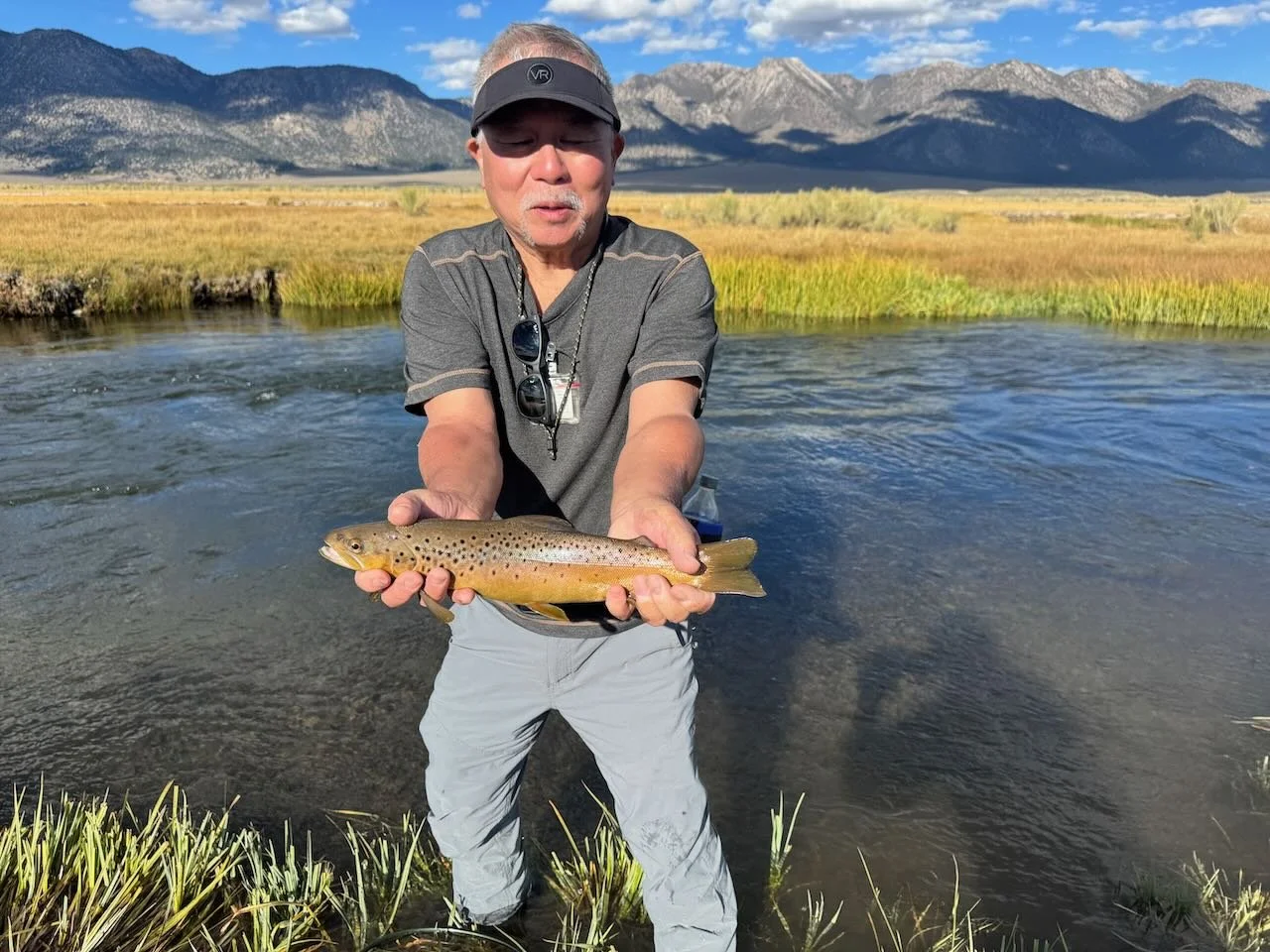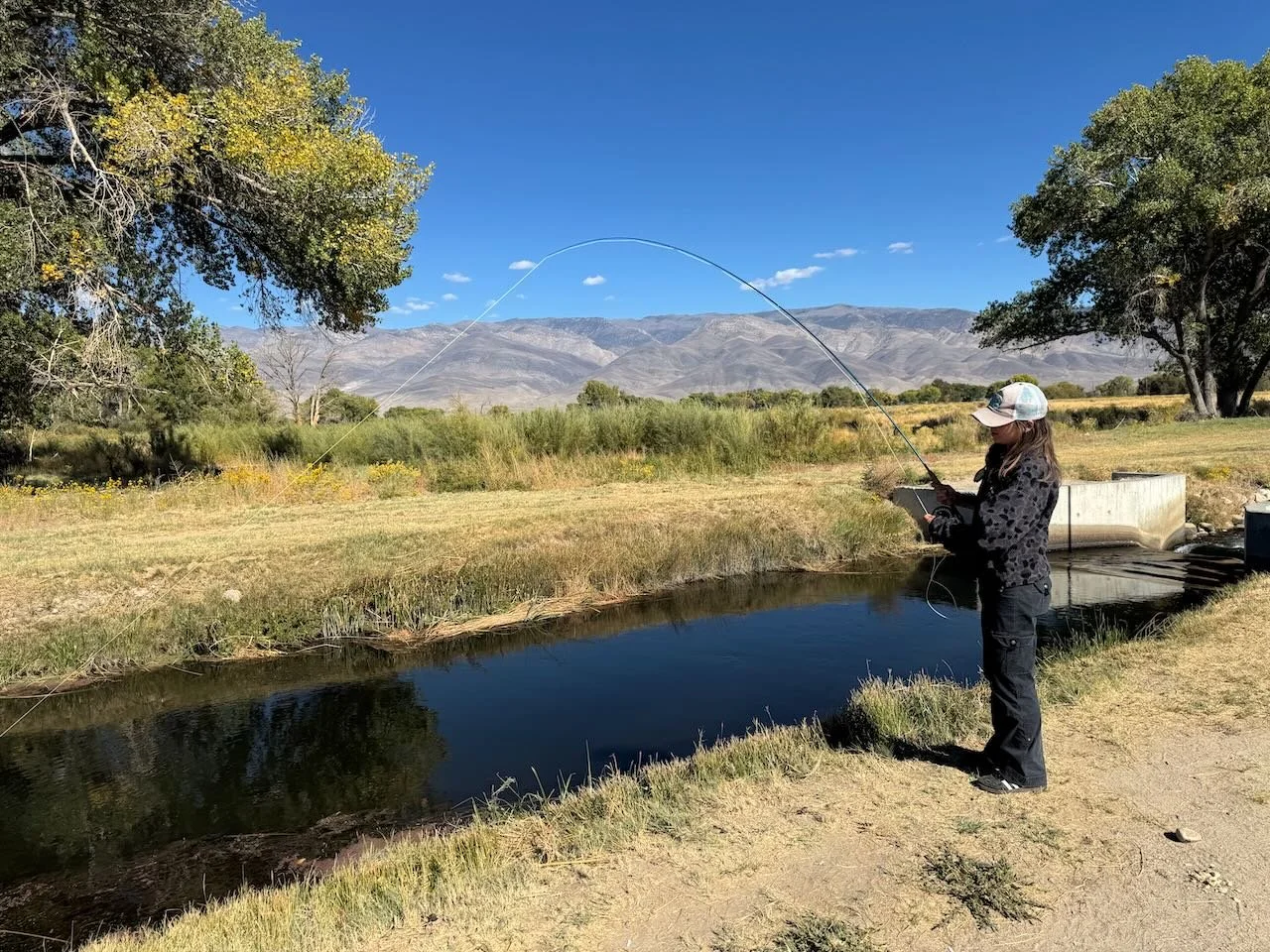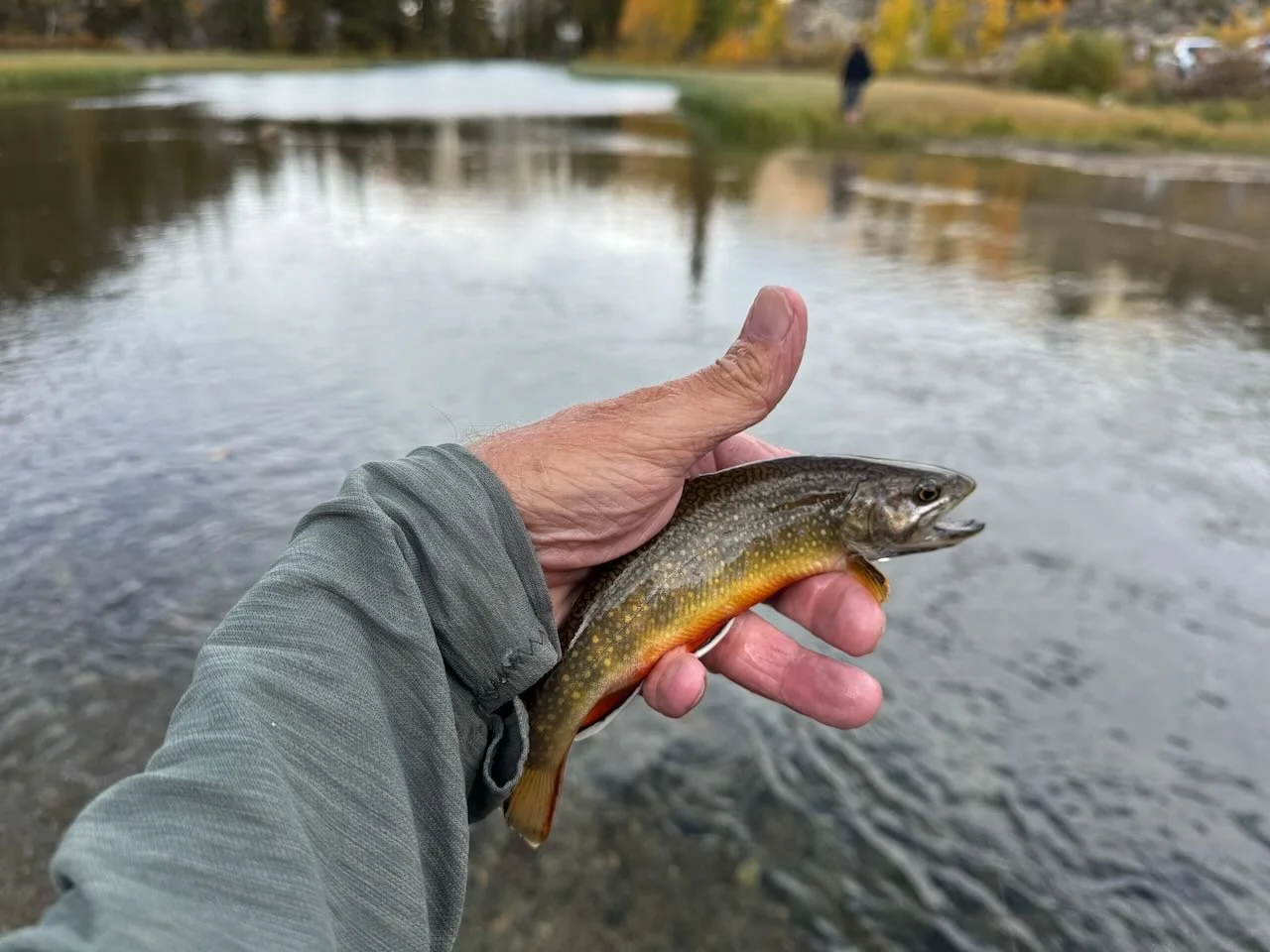Unprecedented warm weather has descended on the Eastern Sierra in mid-December. Mid-day temperatures are perfect for insects to hatch. Hatches of mayflies and midges have the trout feeding on the surface and on the substrate. Dirt roads are drying out, but there are still a few mud puddles on the dirt roads that fly fishers should be avoiding. Dry fly fishing in December is a treat and is happening on Eastern Sierra waters middle of the day.
Fall like weather is making fly fishing in the Eastern Sierra fun with midges and mayflies fished on the surface and on the substrate.
Lower Owens River
Wild Trout Section:
Mid-day temperatures in the upper 60’s has fly fishers wearing T-shirts and sun shirts. Cold weather creeps back in as the sun goes down. Then it’s time to put the jacket back on. Mid-morning to mid-afternoon the trout are feeding on blue wing olive mayflies and midges. For nymphs fish with size 18 bead head flash back pheasant tail nymphs, size 18 olive quilldigons, size 18 Frenchies, size 18 midges in tiger, zebra and blood coloration and size 18 green/gold brassies. If you’re in the right spot when the mayfly hatch goes off and the trout are consistently feeding on the surface it’s time to fish with size 18 blue wing olive parachutes, size 18 Adam parachutes and size 18 olive sparkle duns. Dry flies are consistently producing five to eight inch wild browns and rainbows. Nymphs are producing five inch to 16 inch trout
Indicator nymphing with a size 18 bead head flash back pheasant tail nymph fooled a wild brown trout for Matt Roosen on the lower Owens River .
Hot Creek
Interpretive Site:
The mid-day warm weather is bringing trout to the surface for blue wing olive mayflies. Making an accurate cast and getting a drag free drift is how to fool the picky trout of Hot Creek. If the trout are refusing your dry fly try going down a size on your tippet. Start with 5X tippet and drop down to 6X tippet if the fish are not taking your flies. Fish with size 20 olive sparkle duns, size 20 Adams parachutes, size 20 blue wing olive parachutes, size 20 Griffith’s gnats, and size 20 CDC midges.
This Hot Creek rainbow took a size 16 pink Frenchie fished as part of a three fly Euro Rig fished at Hot Creek Interpretive site.
Hot Creek
Canyon Section:
Weed beds are still present in Hot Creek Canyon making it hard to drift flies to the trout. Dry flies are easier to cast into the narrow lanes between the weed beds. Nymphs are easier to fish in the riffles and pools devoid of weed beds. When nymphing use size 18 olive quilldigons, size 12 stoner nymphs, size 16 pink Frenchie’s, size 18 brassies, size 18 green/gold brassies, size 18 tiger and zebra midges, size 18 pheasant tail paranymphs and size 18 olive quill RS2’s. Fish with size 20 CDC midge, size 20 Adams midge, size 20 Griffiths gnats size 20 Adams parachutes, size 20 blue wing olive parachutes and size 20 olive sparkle duns on the surface.
The upper Owens River is missing its coat of snow and looks more like October than December.
Upper Owens River
Above Benton Crossing Bridge:
With the warm weather the dirt roads accessing the upper Owens River above Benton Crossing Bridge are slowly drying out. Fly fishers still need to avoid the few remaining muddy patches on the spur roads leading out to the river. Trophy rainbows are resting and feeding in the deep holes, deep pools and cut banks. Success is covering the water with enough cast to get your flies and the trout in the same space in the water. The trophy trout move around in the holes so that your flies may not be drifting where the trout are. Hence lots of casts are required to get the flies where the trout are. Nymph under an indicator or with a Euro rig with size 12 green/gold prince nymphs, size 12 stoner nymphs, size 12 gold ribbed hare’s ears variations and size 14 copper John’s. There are resident six to 12 inch rainbows and browns that will take size 18 blue wing olive parachutes, size 18 Adams parachutes, size 18 olive quilldigons and size 18 bead head flash back pheasant tail nymphs.
Nymphing Bishop Creek Canal with a size 18 olive quilldigon and size 12 stoner nymph is producing wild brown trout and hold over stocked rainbow trout.
Bishop Creek Canal
Behind Bishop Veterinary Hospital:
Bishop Creek Canal is easier to fish after DWP dredge the canal. The trout are feeding mid-day on mayflies and midges. Smaller fish are feeding on size 20 blue wing olive parachutes, size 20 Adams parachutes, size 18 Griffith’s gnats and size 20 CDC midges. Nymphing with size 12 stoner nymphs and size 18 olive quilldigons is fooling wild and hold over stocked trout fished in the slow flat sections of the canal.


